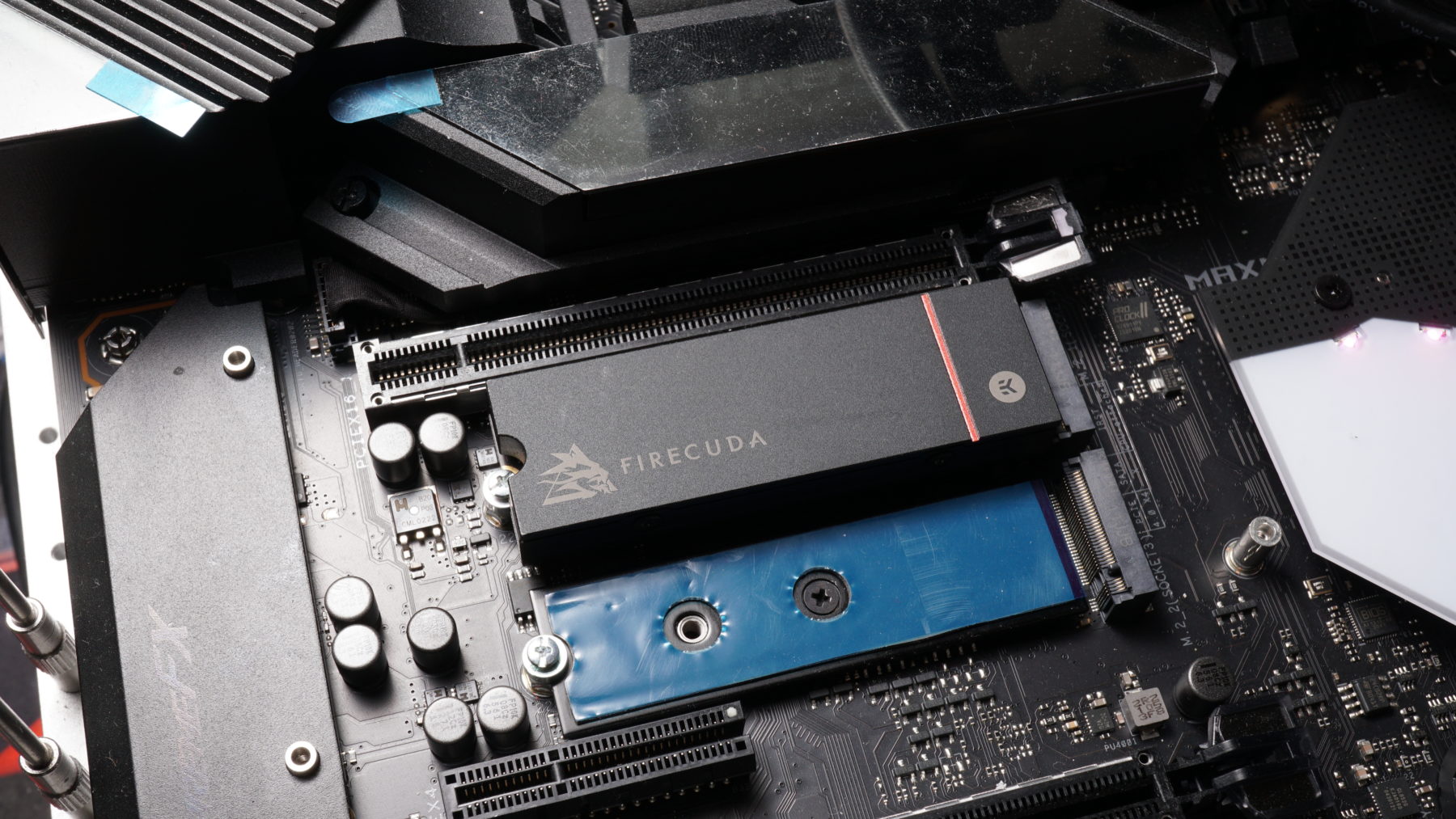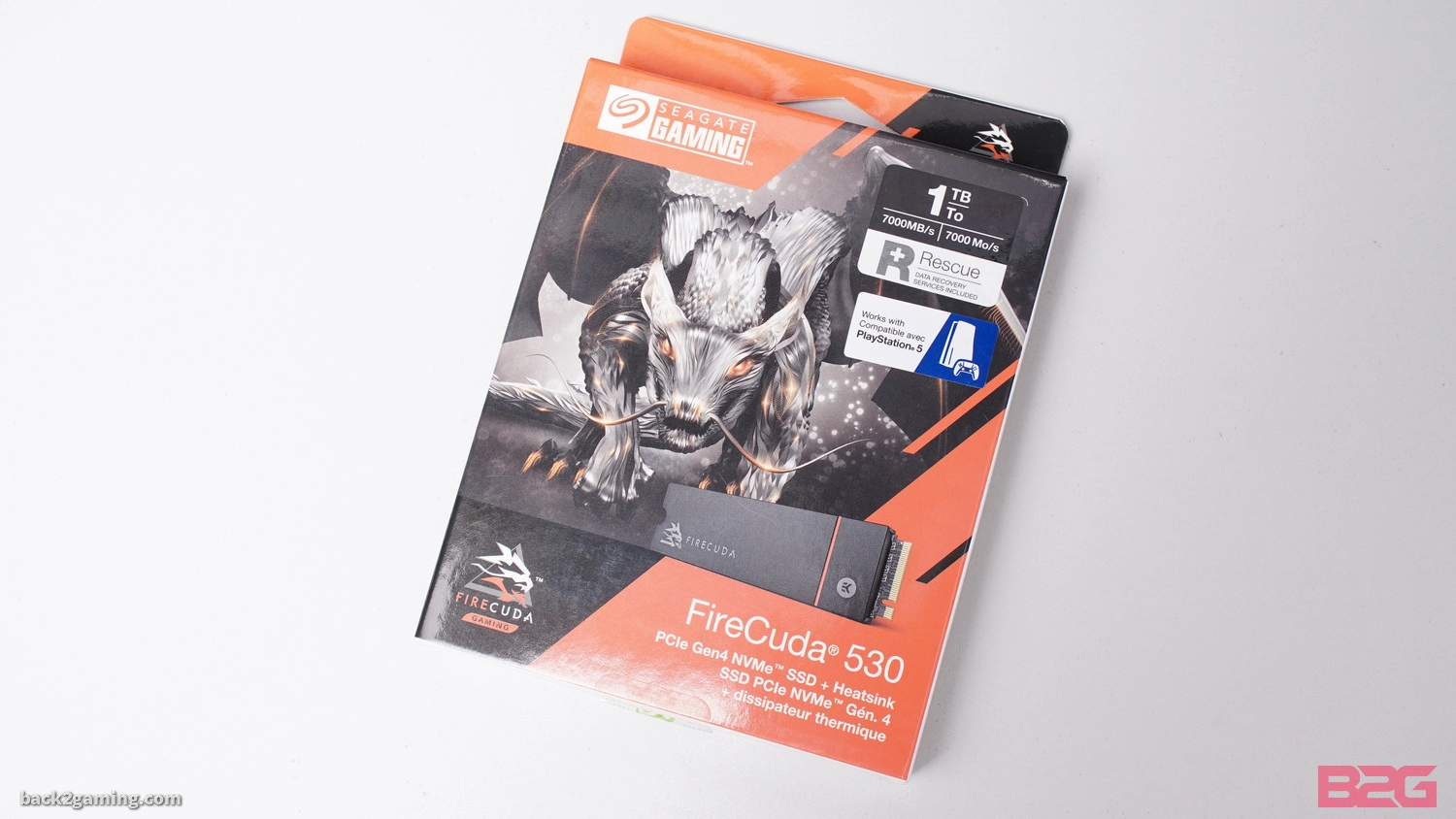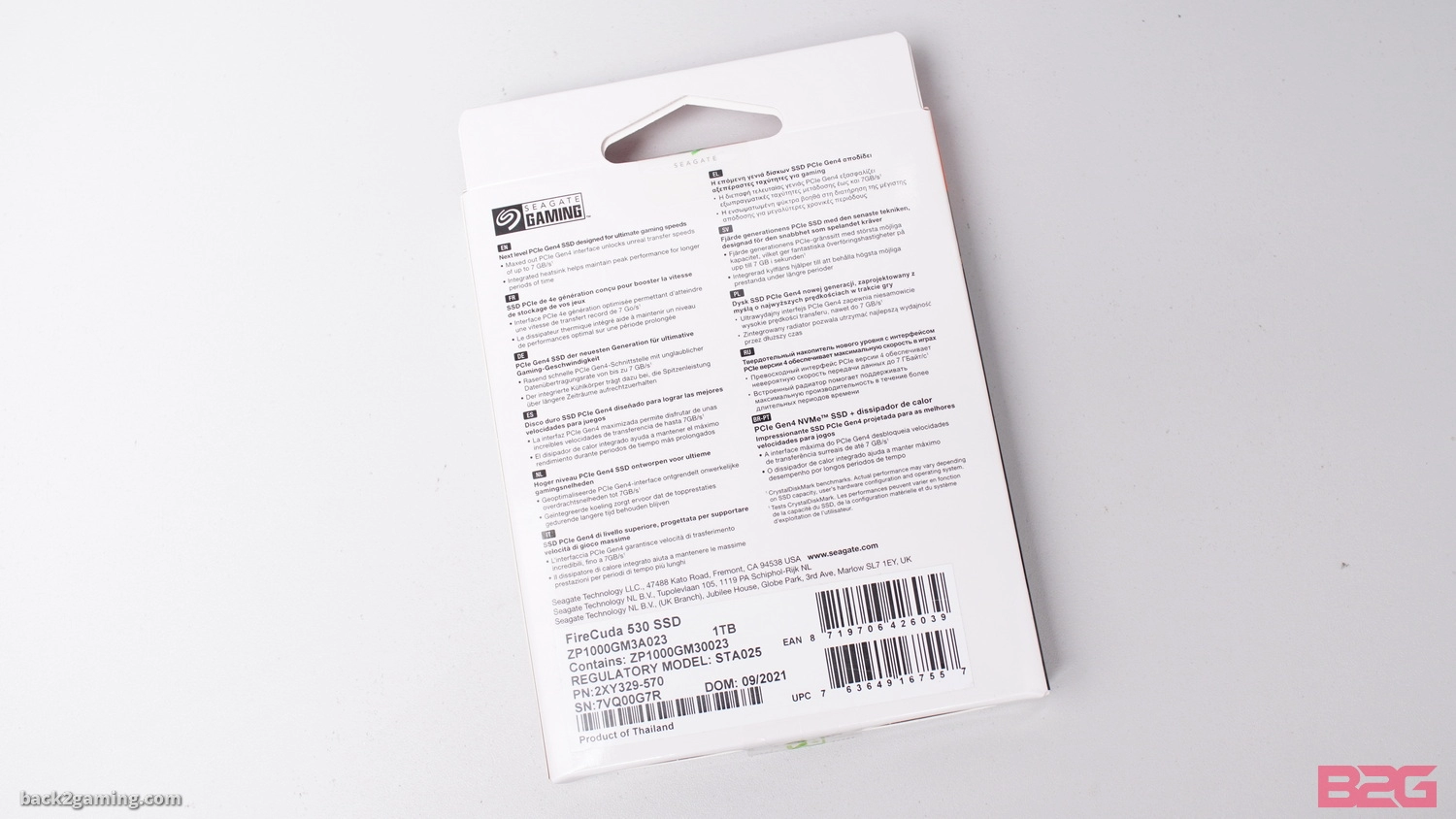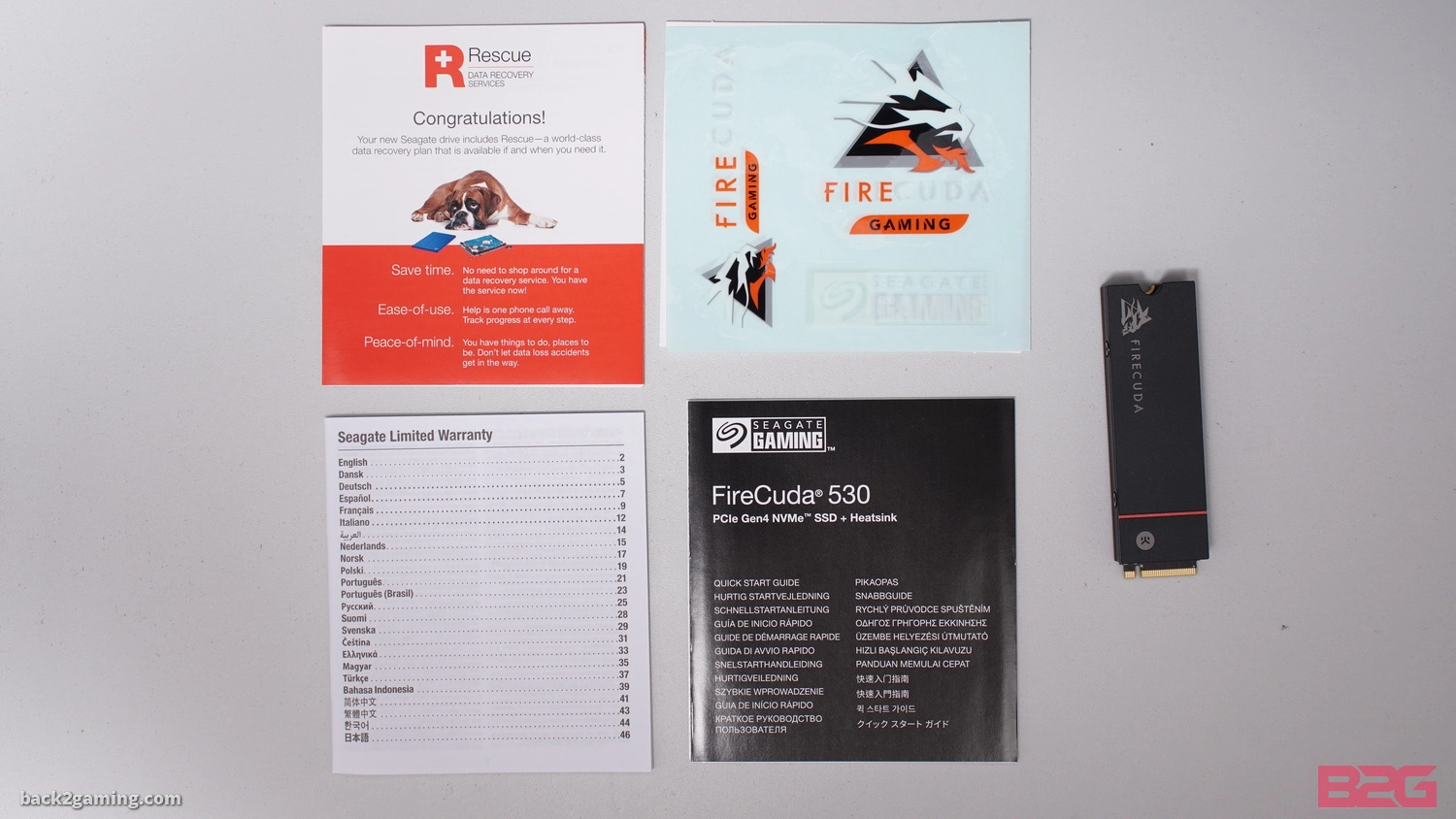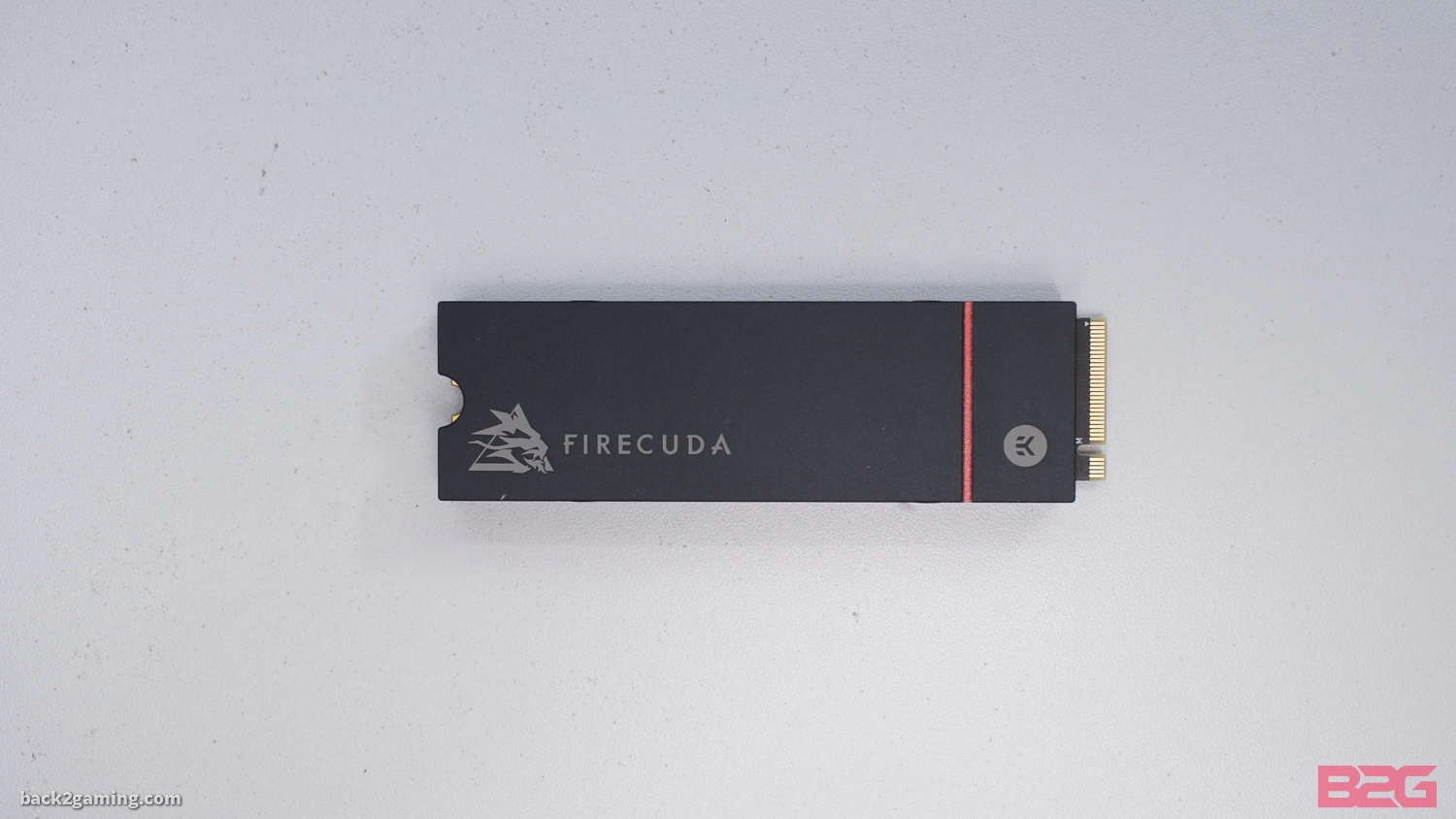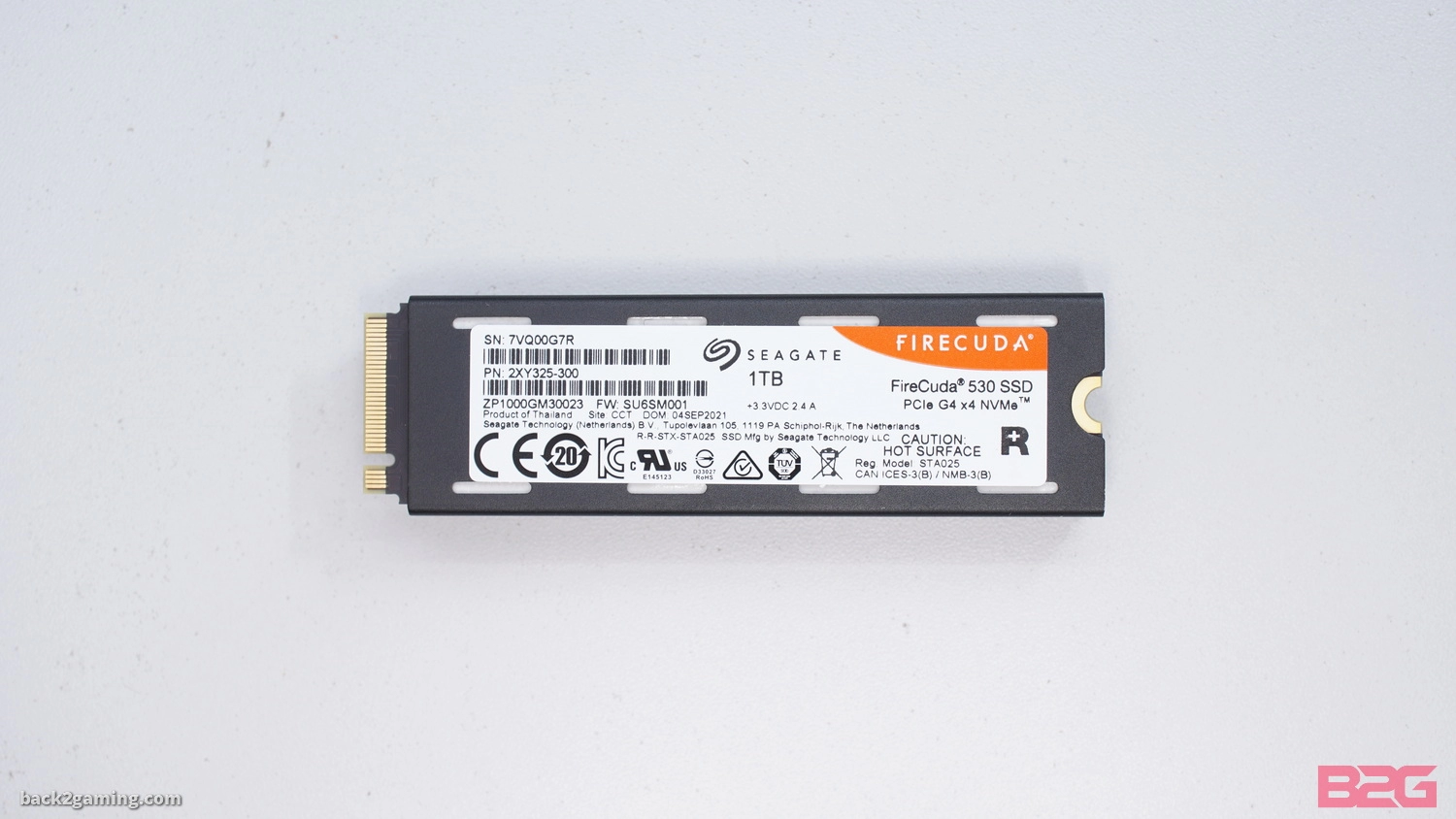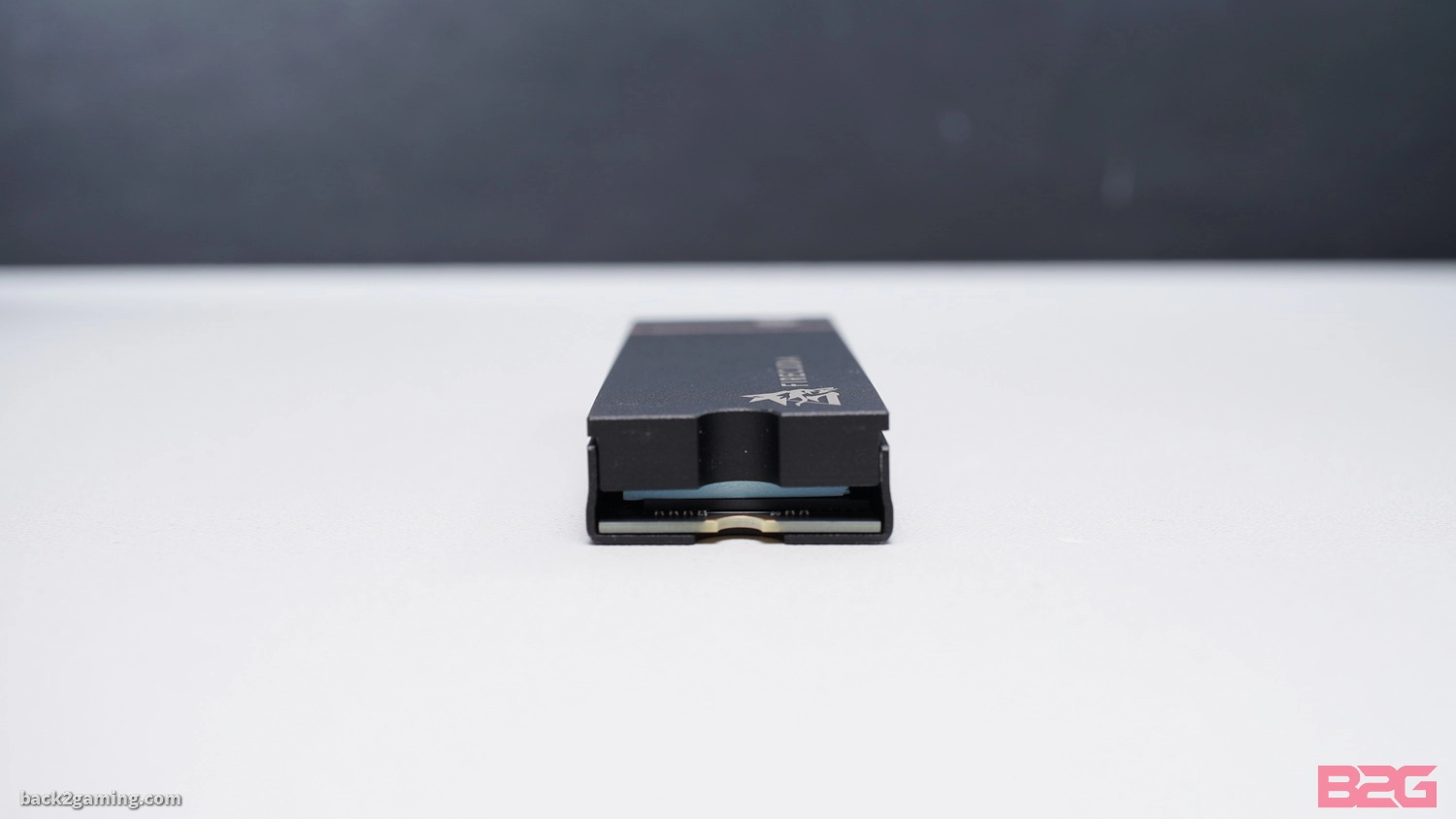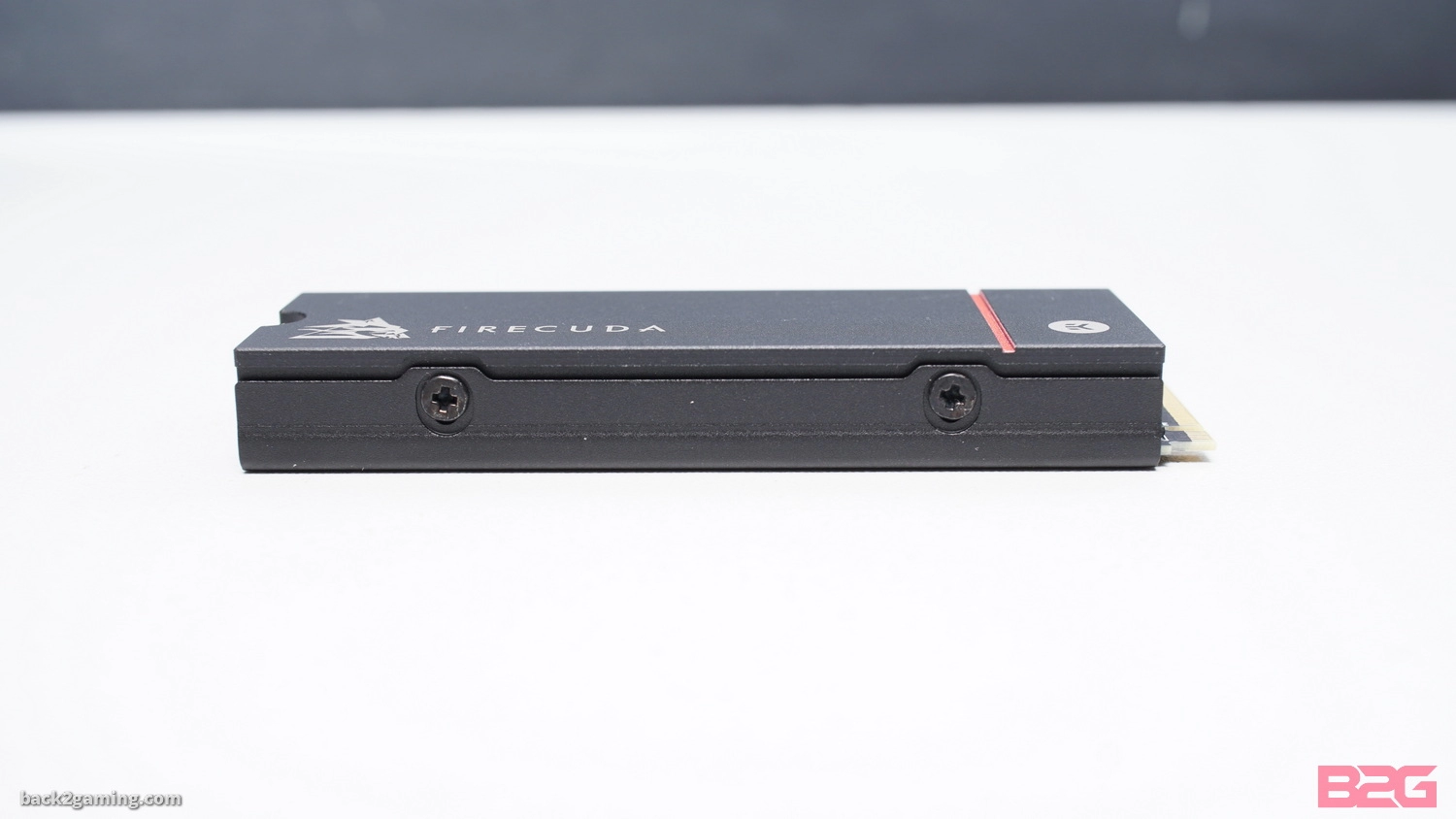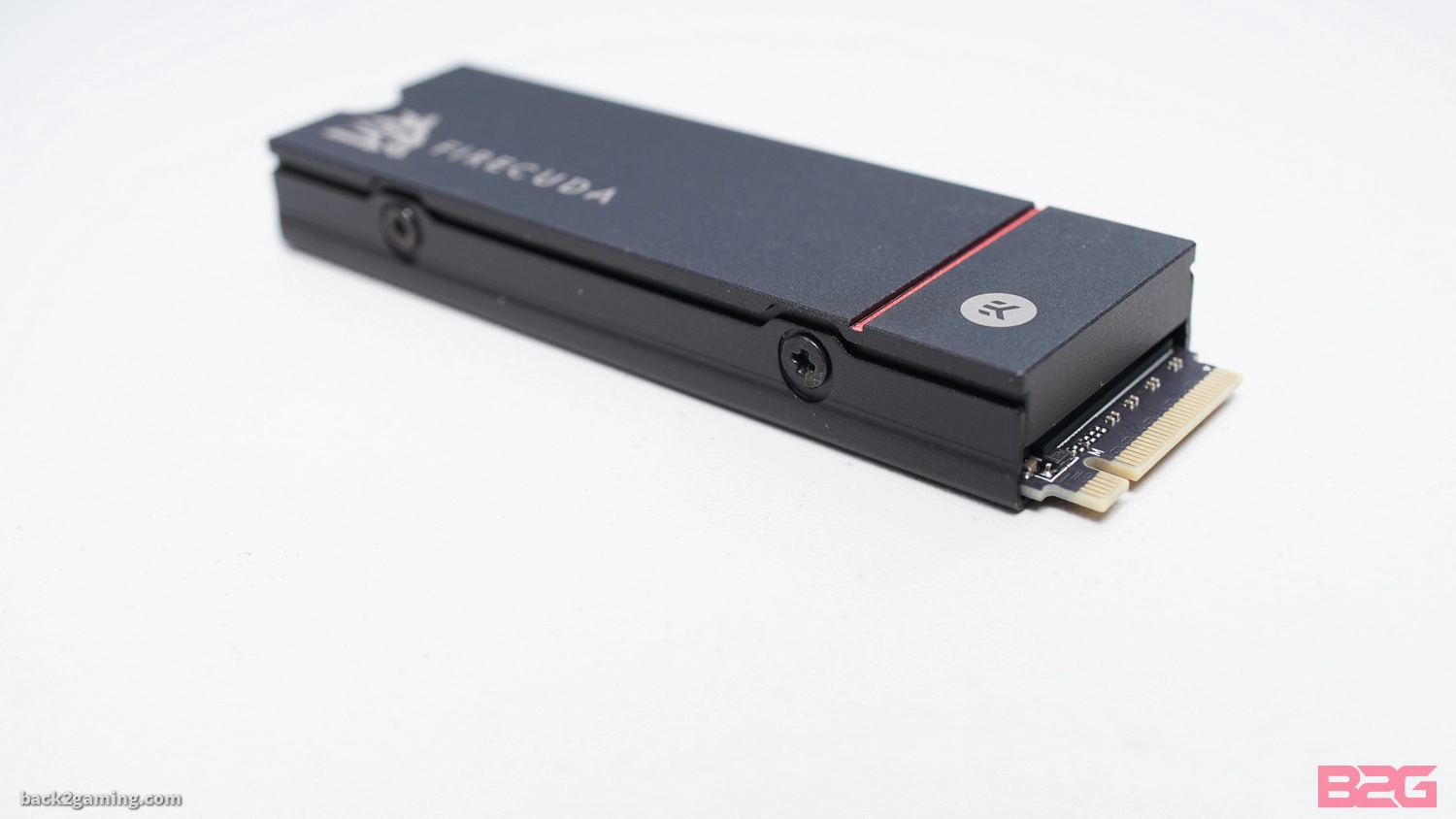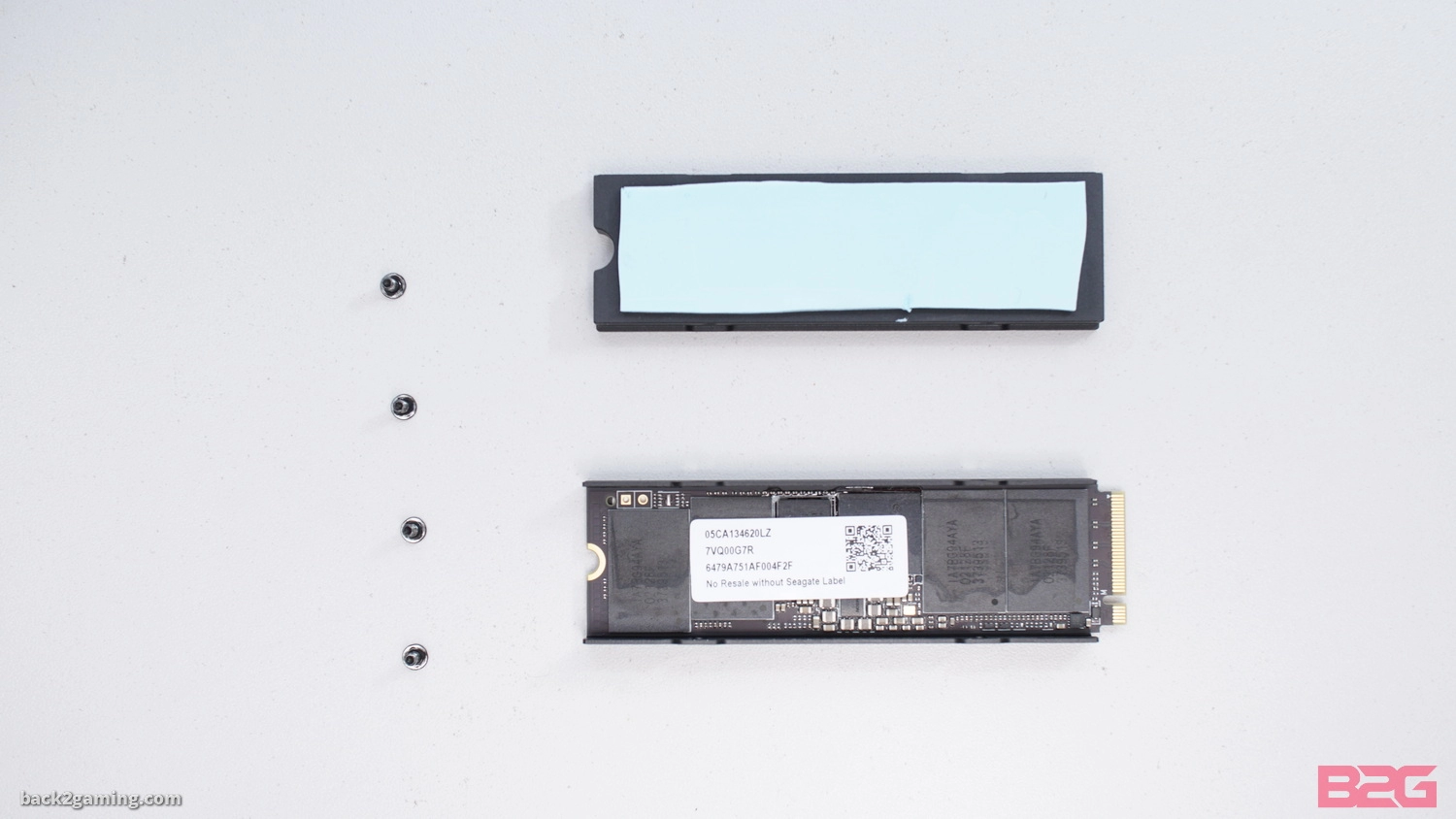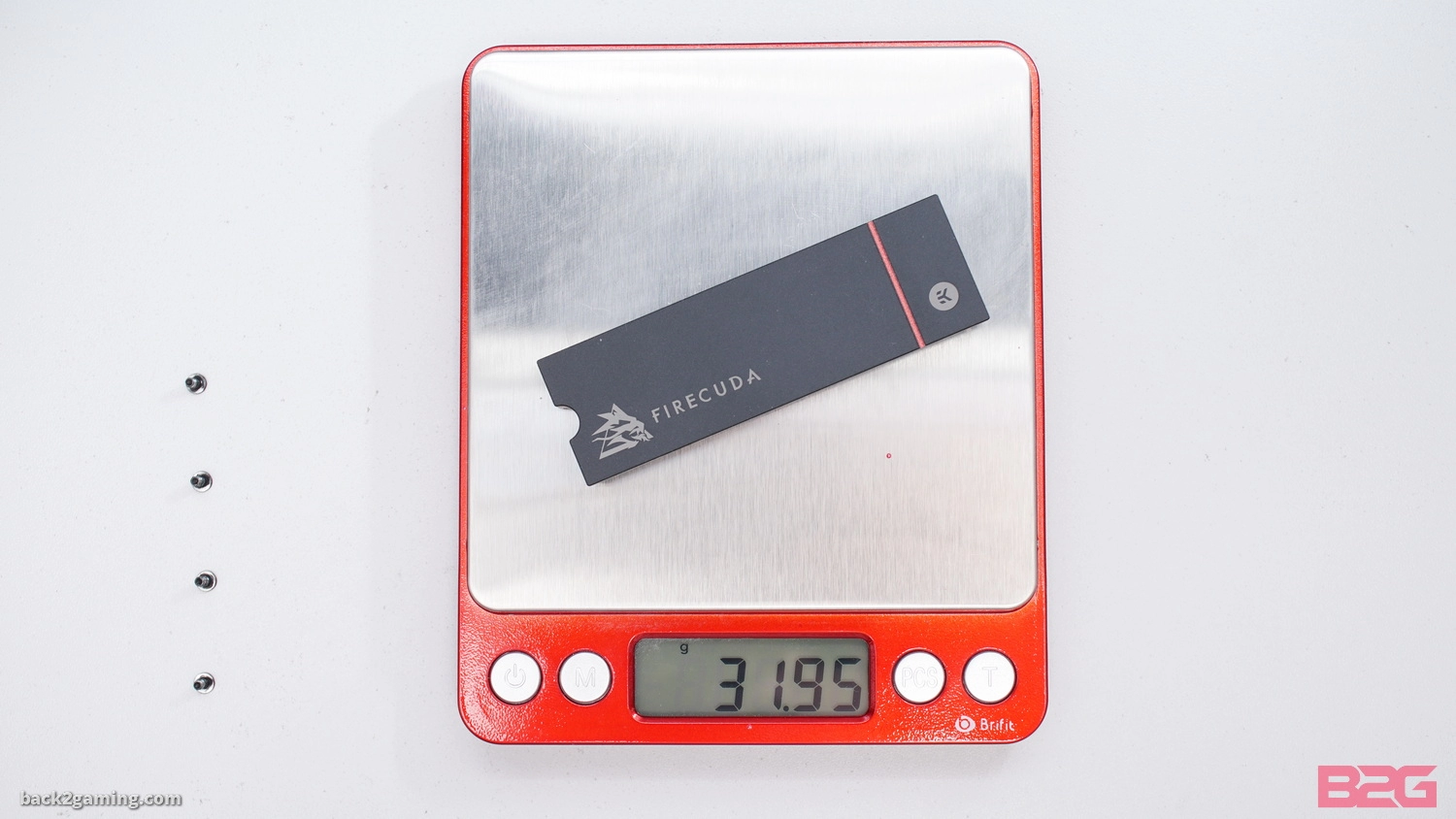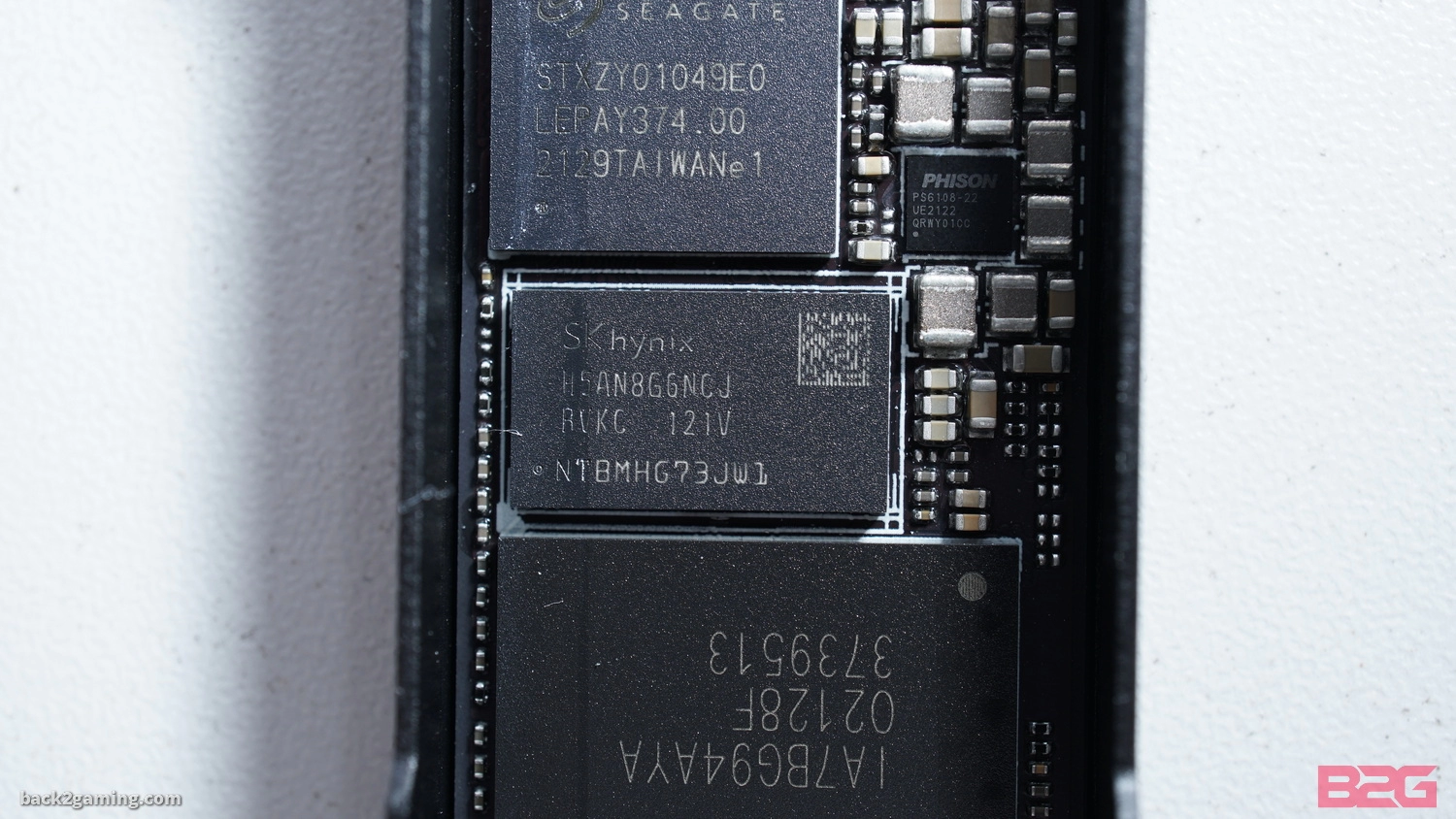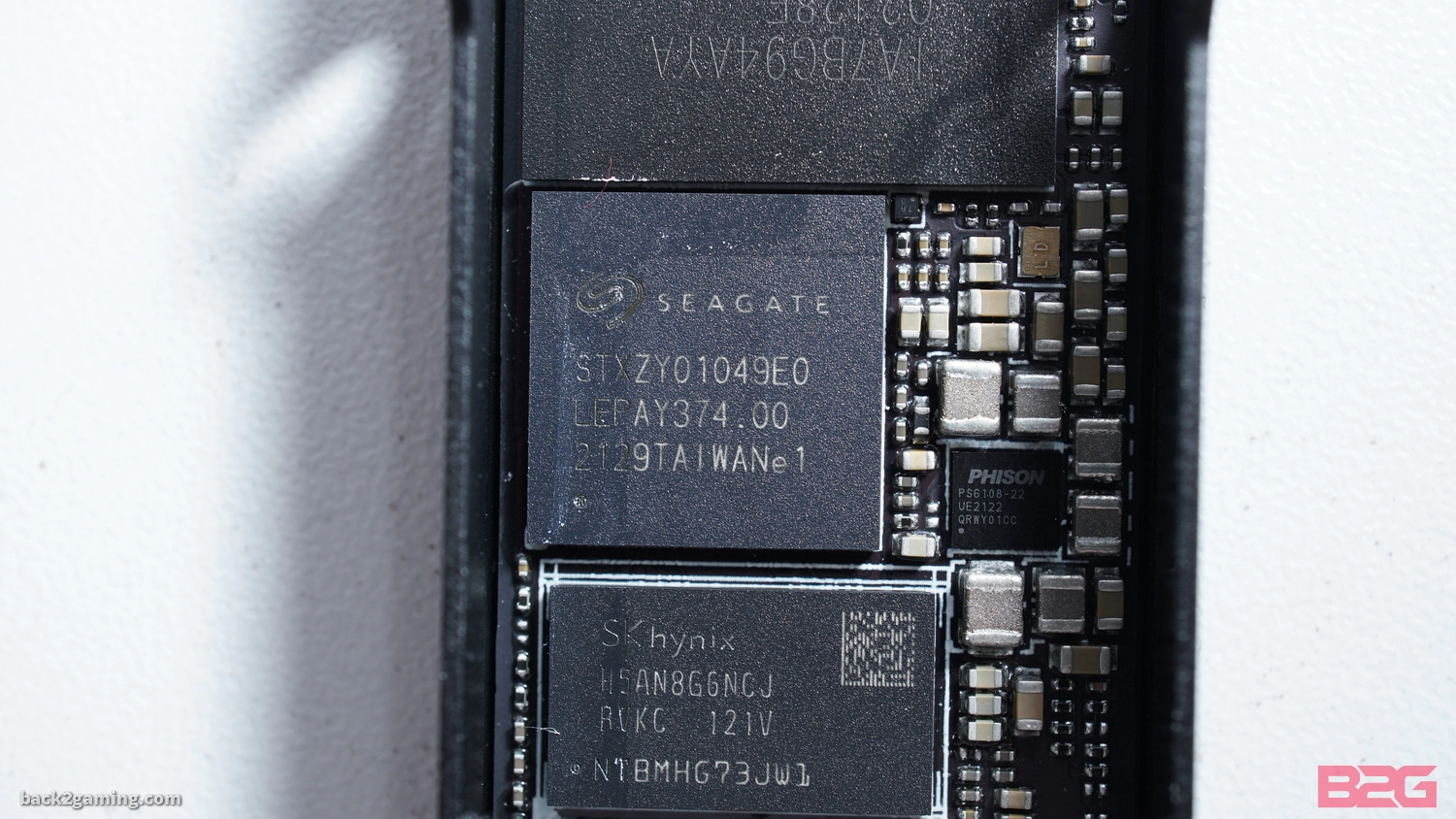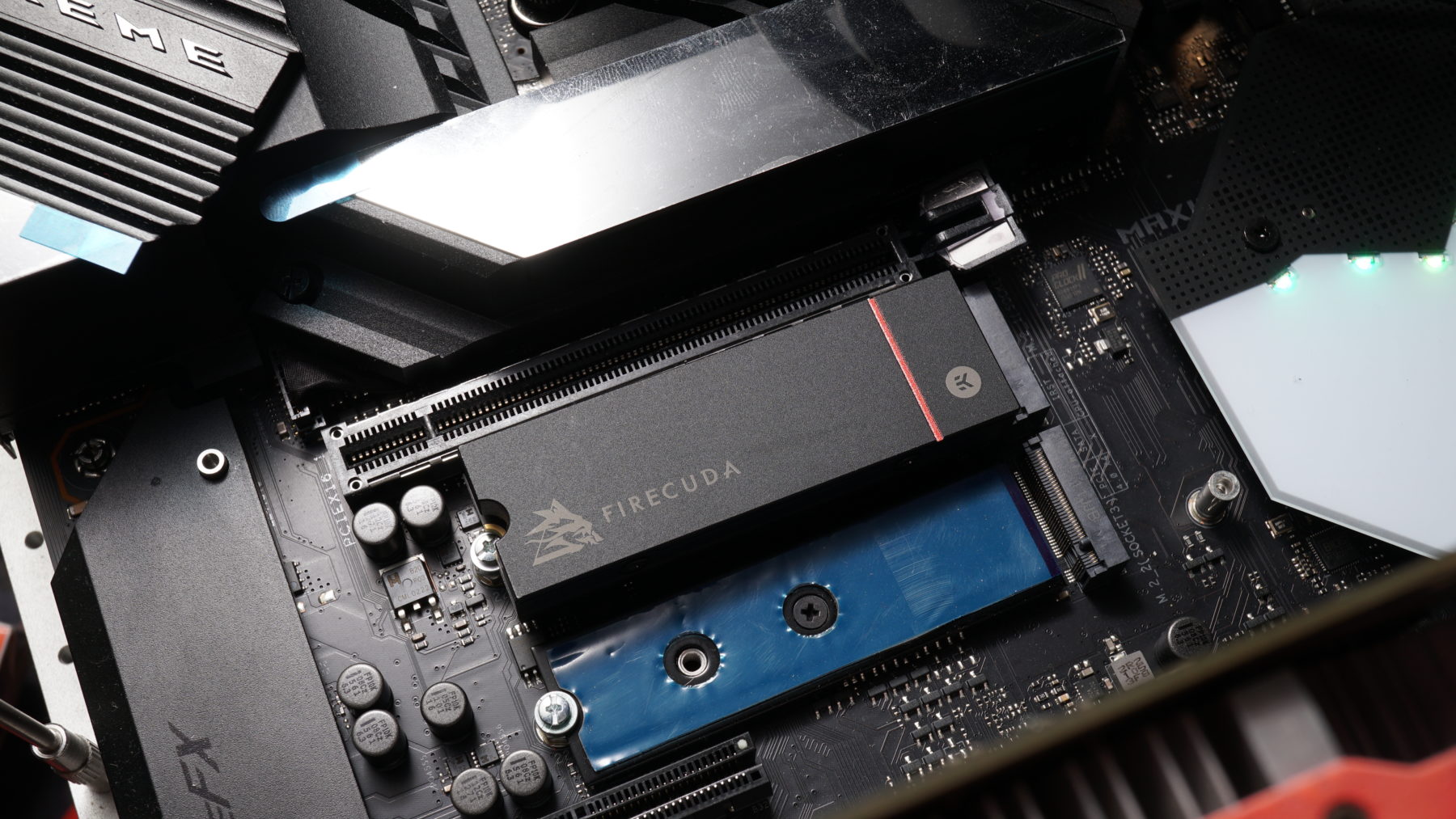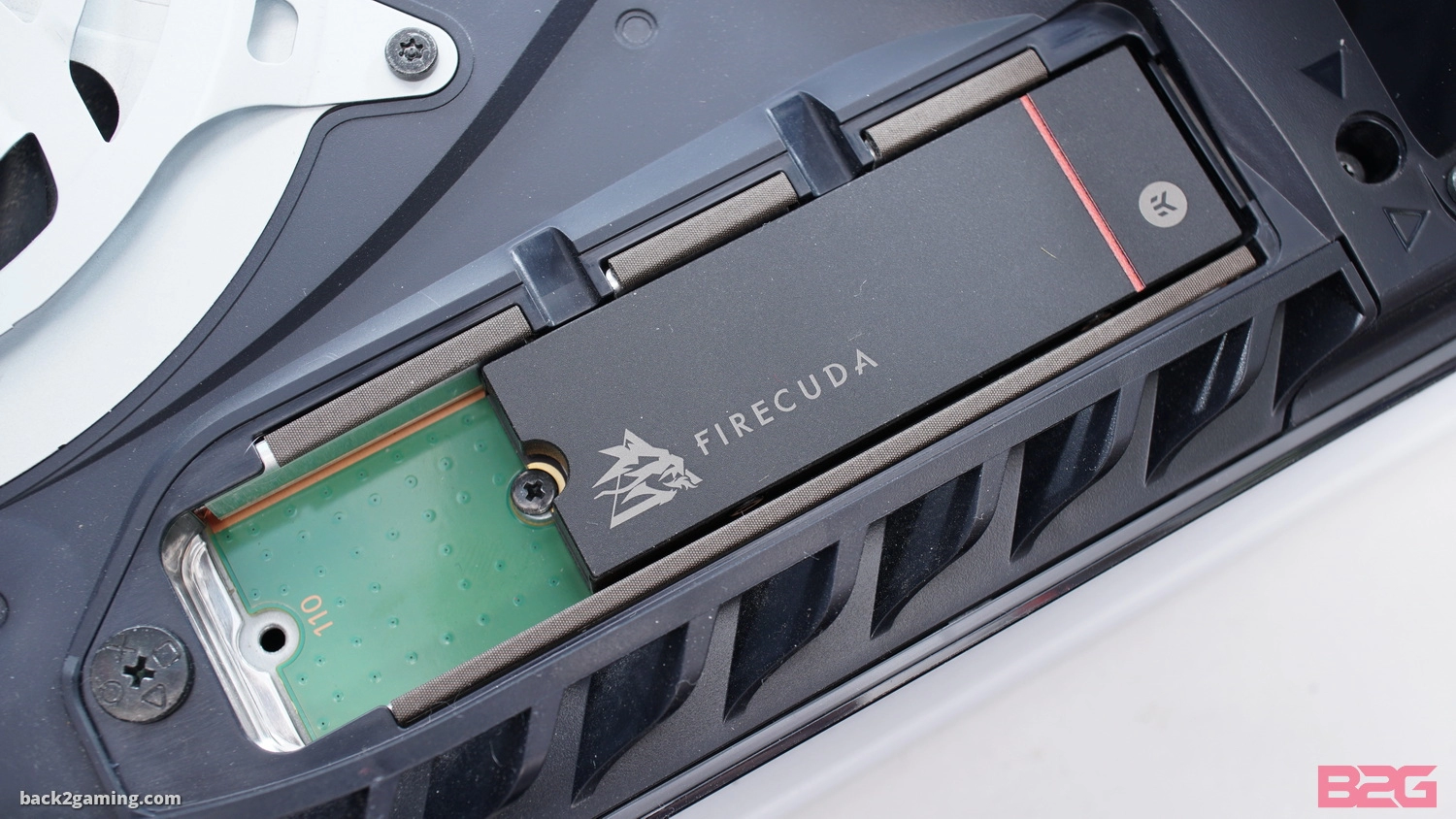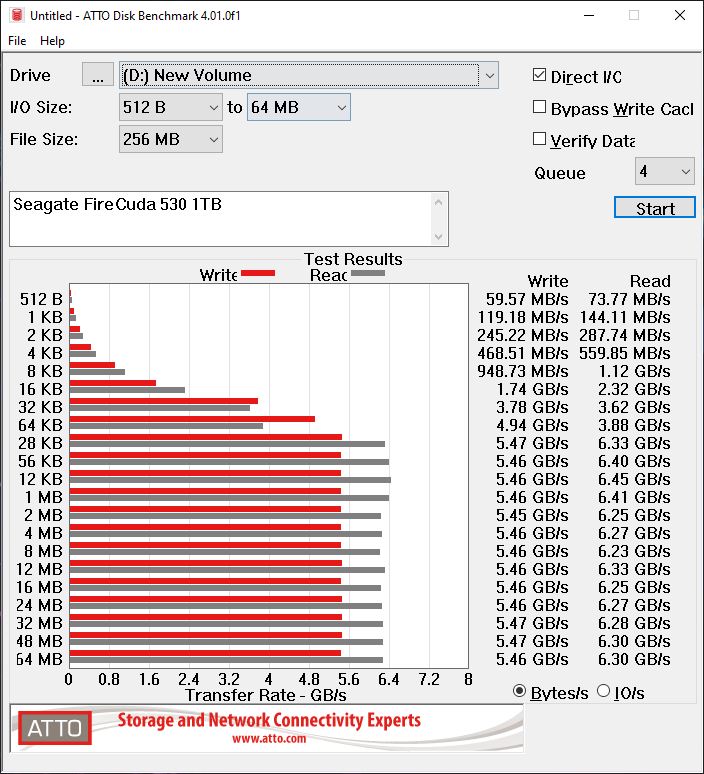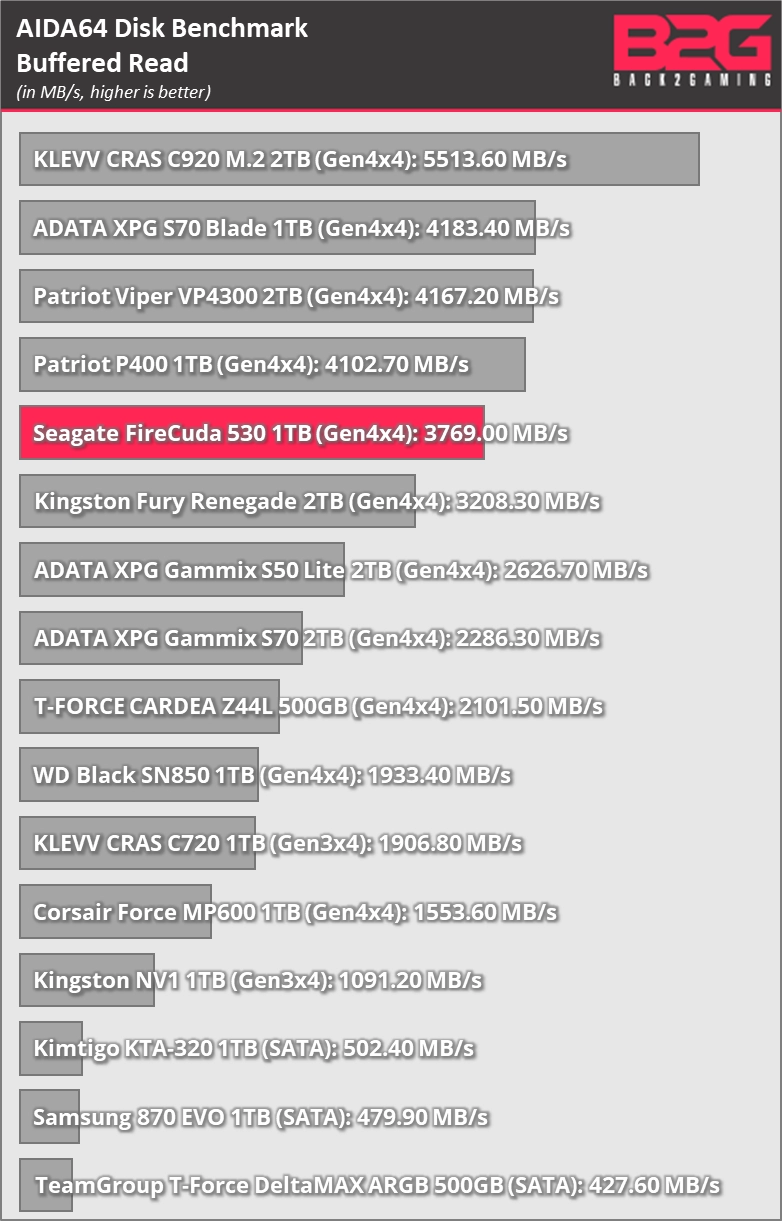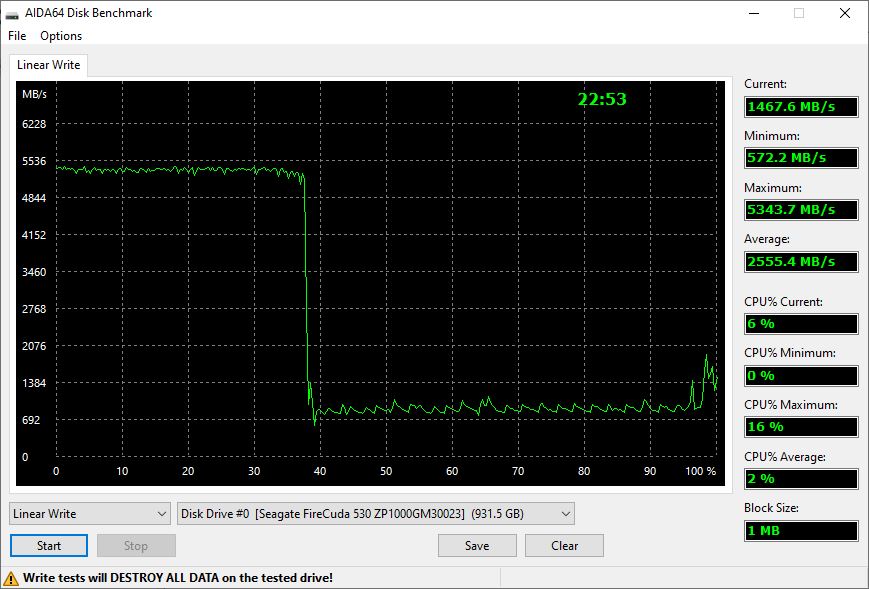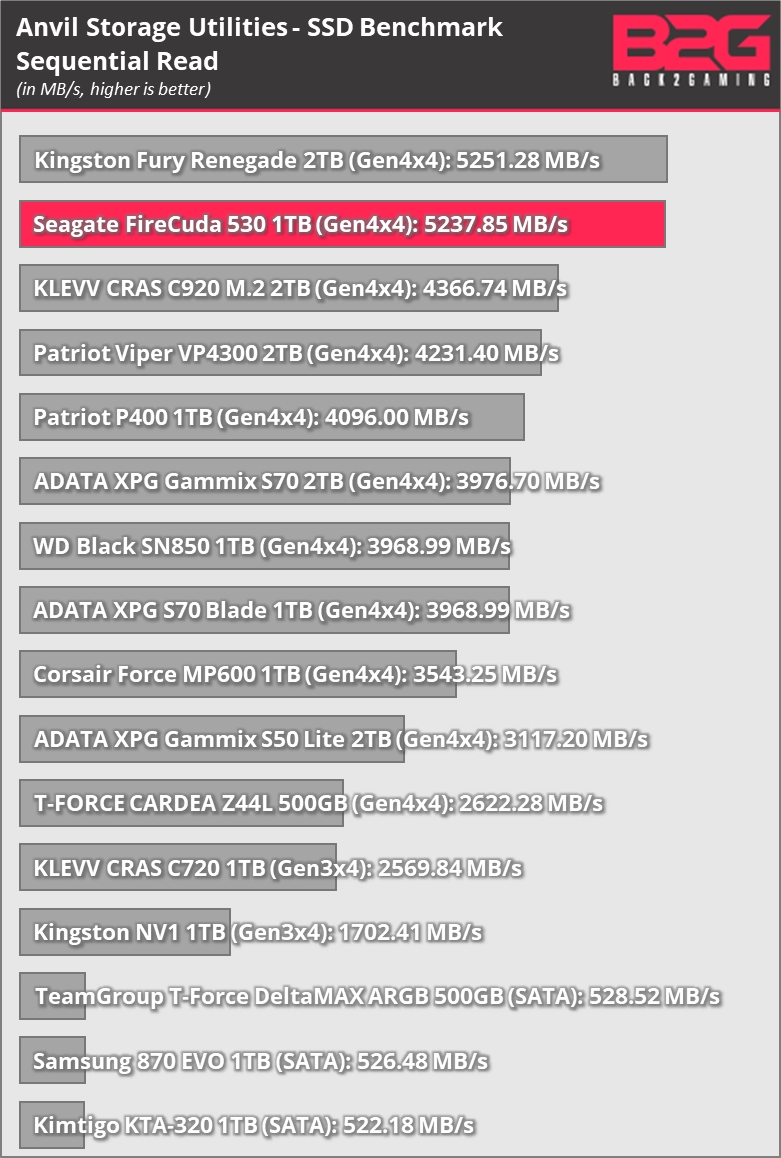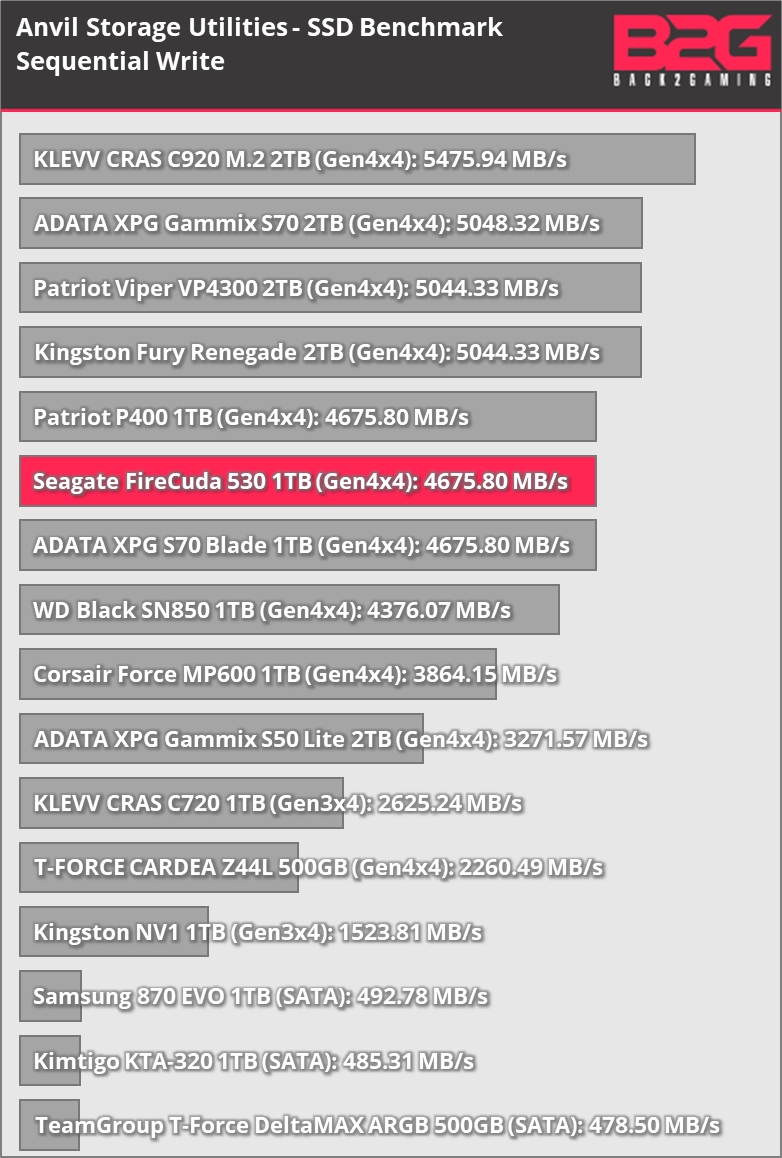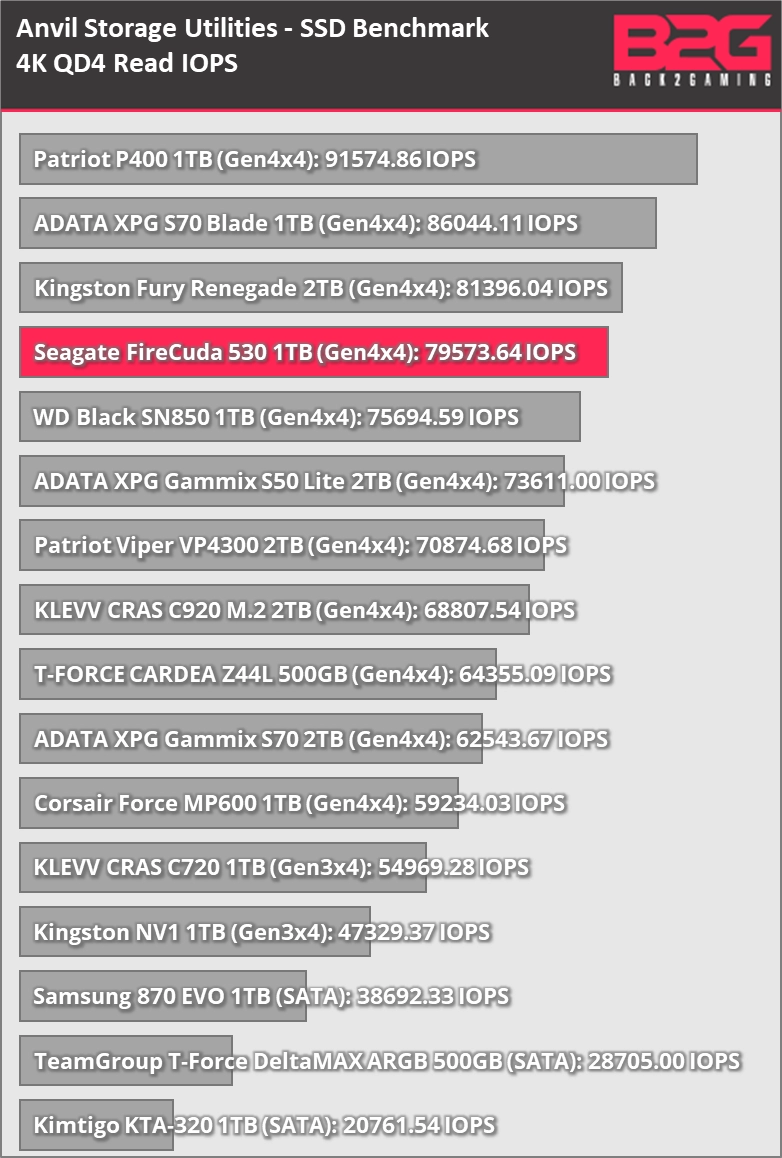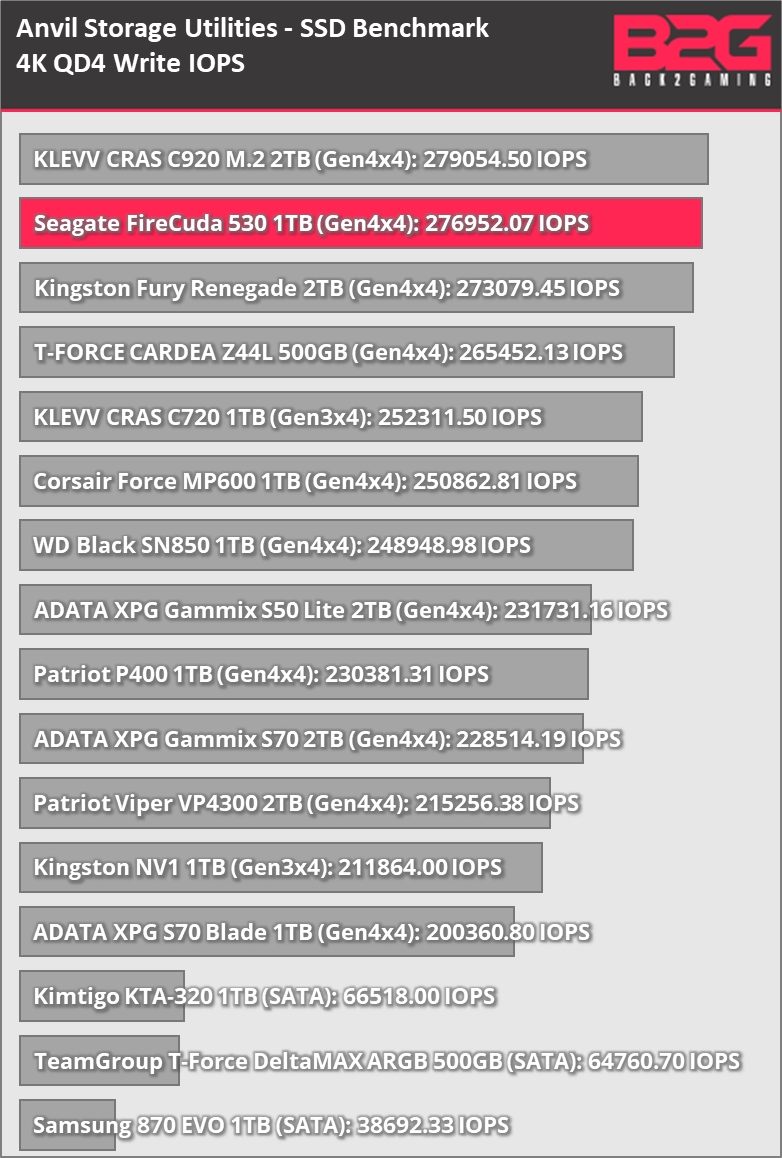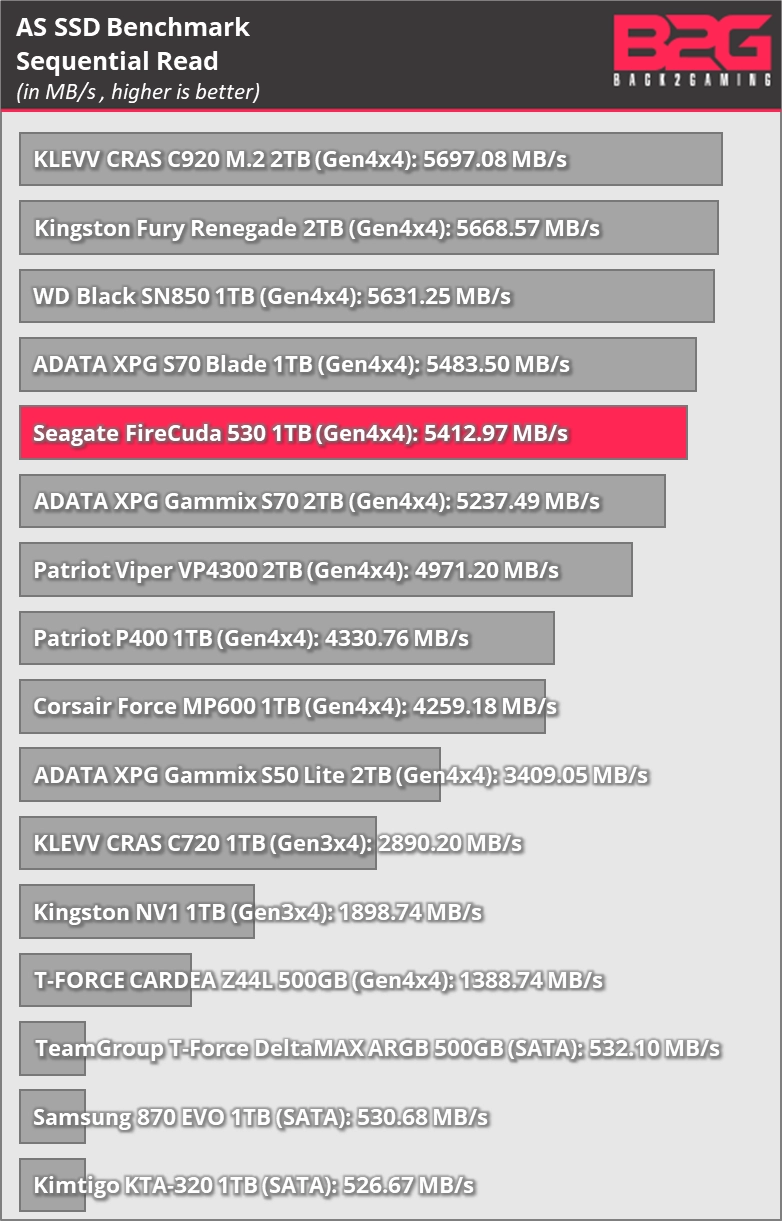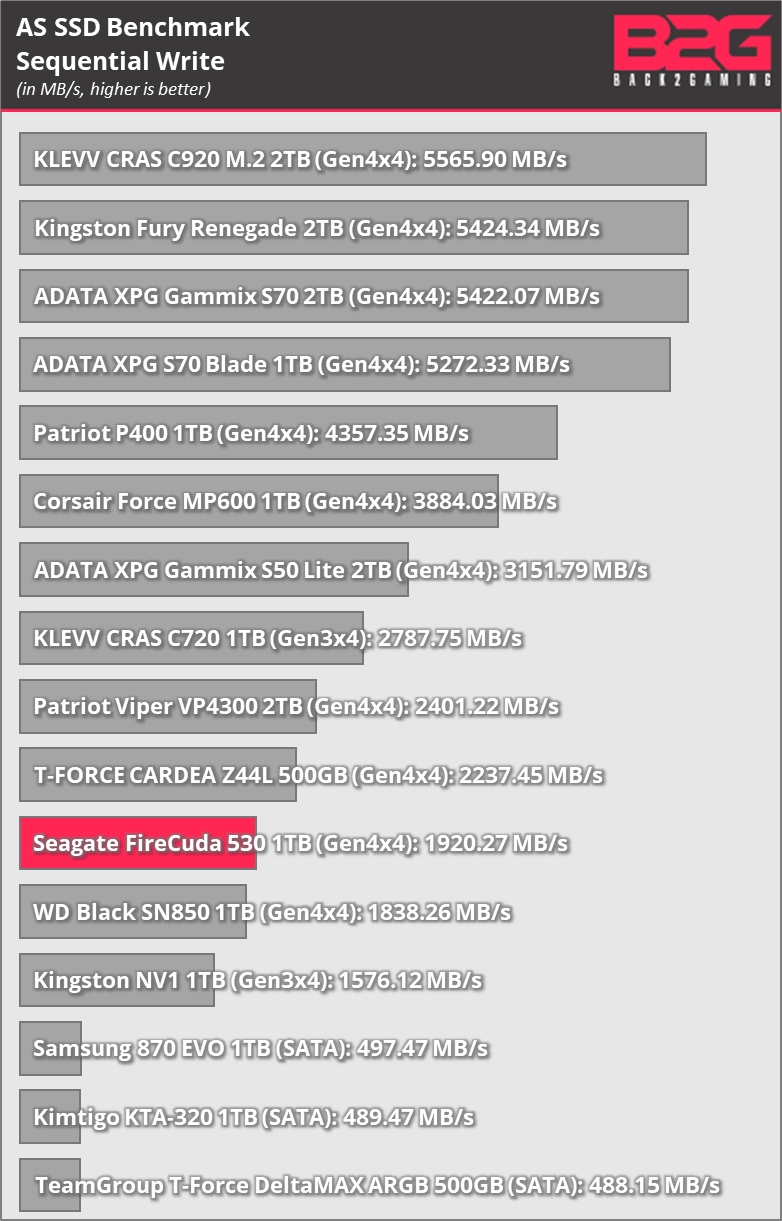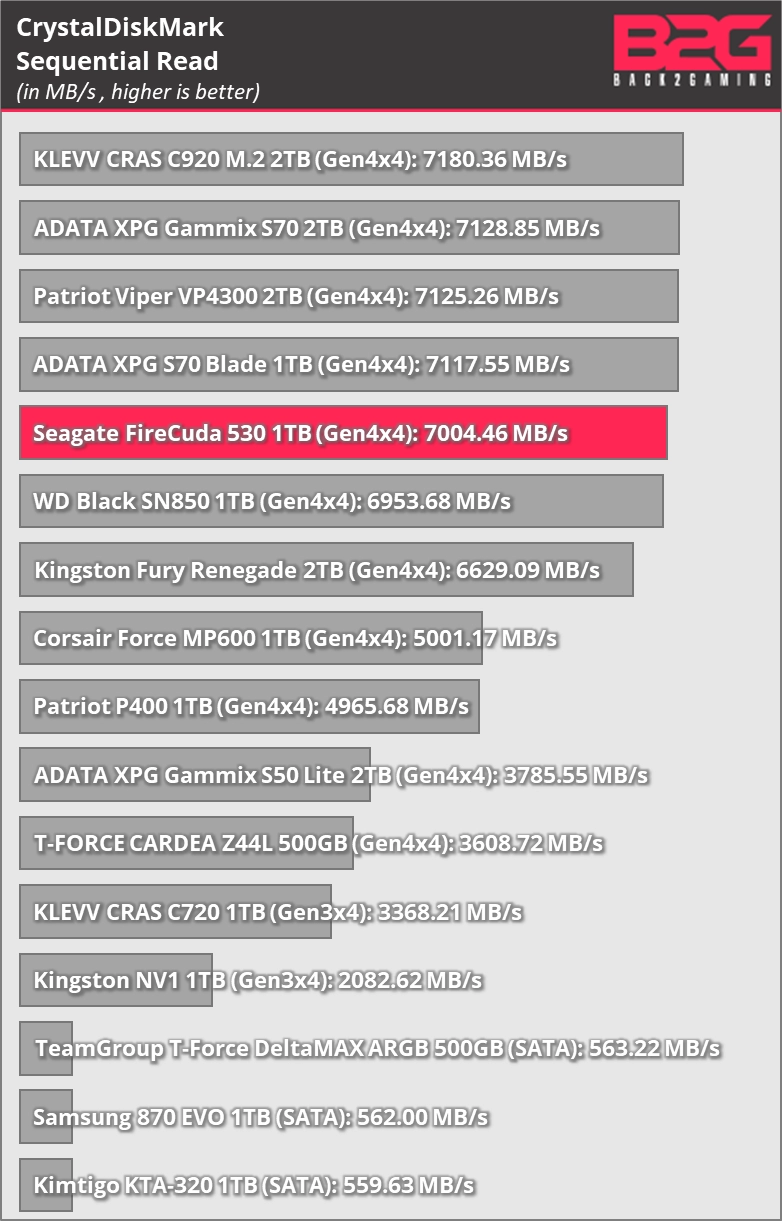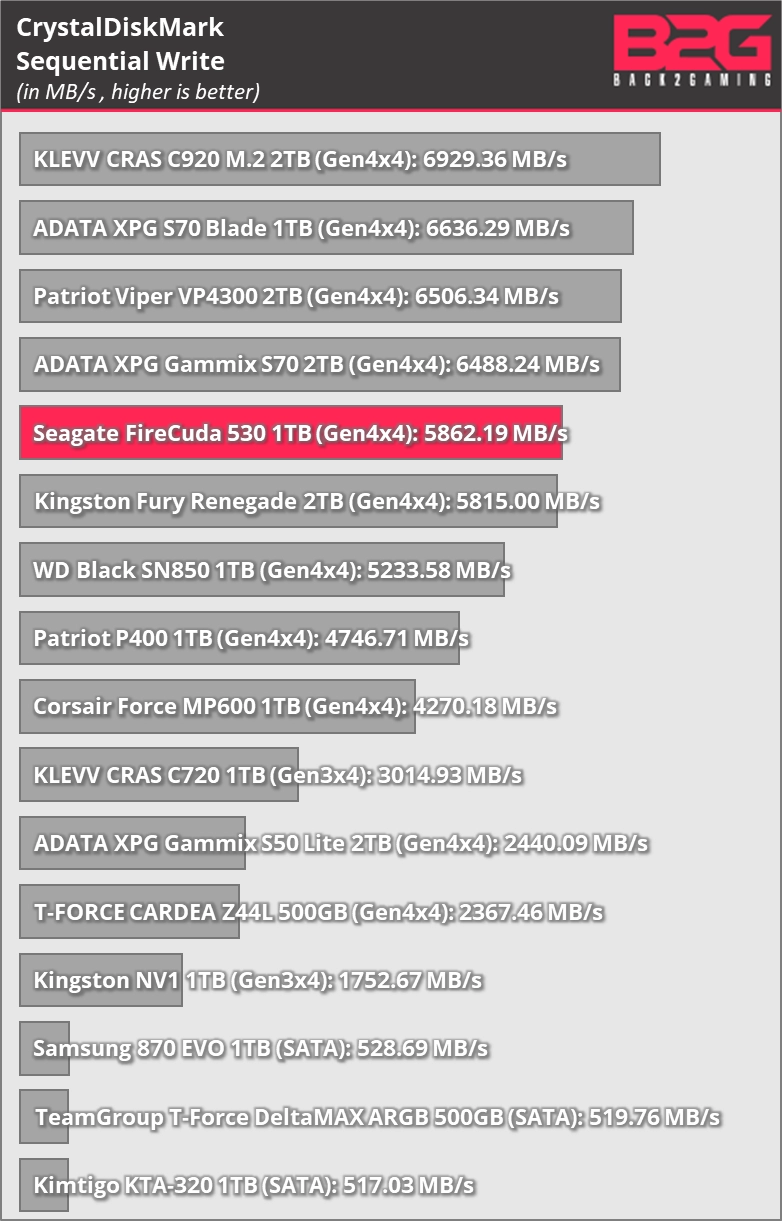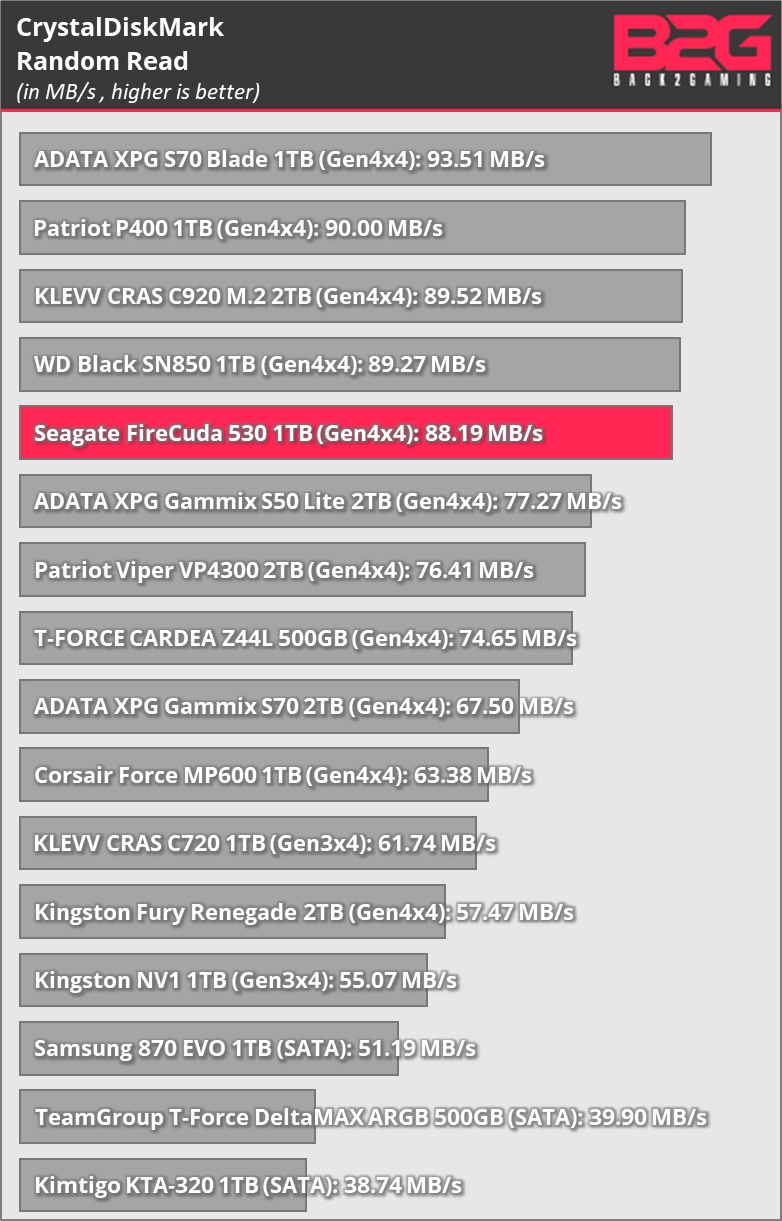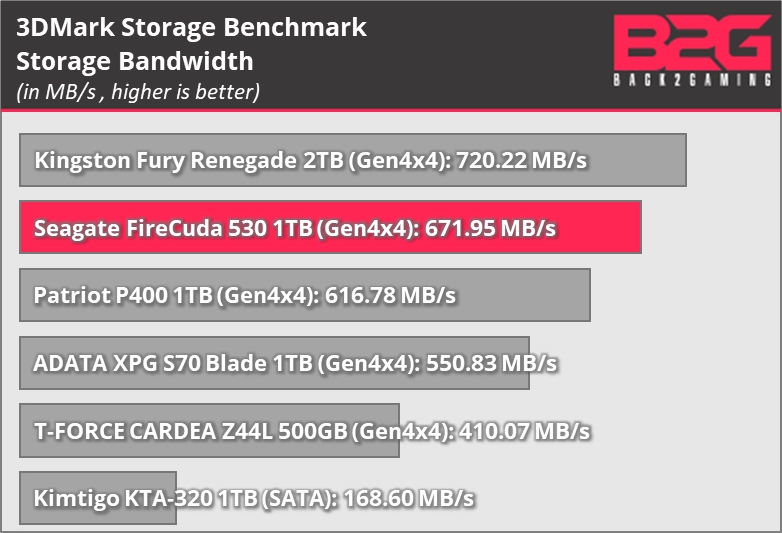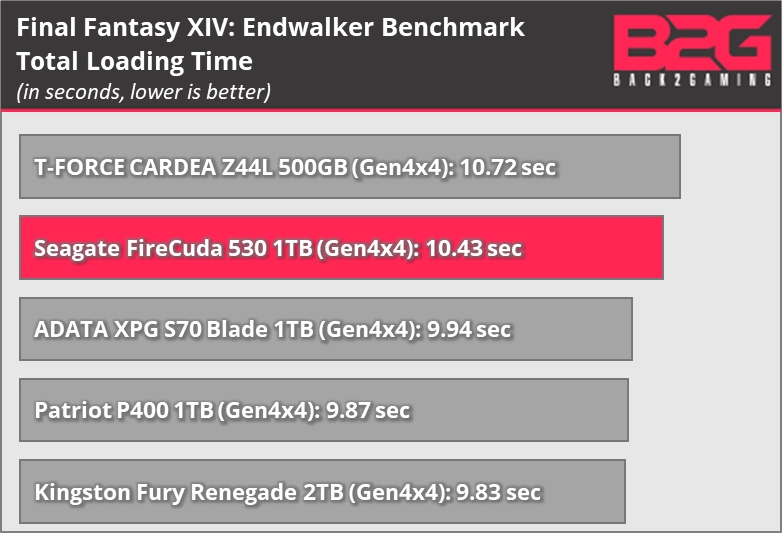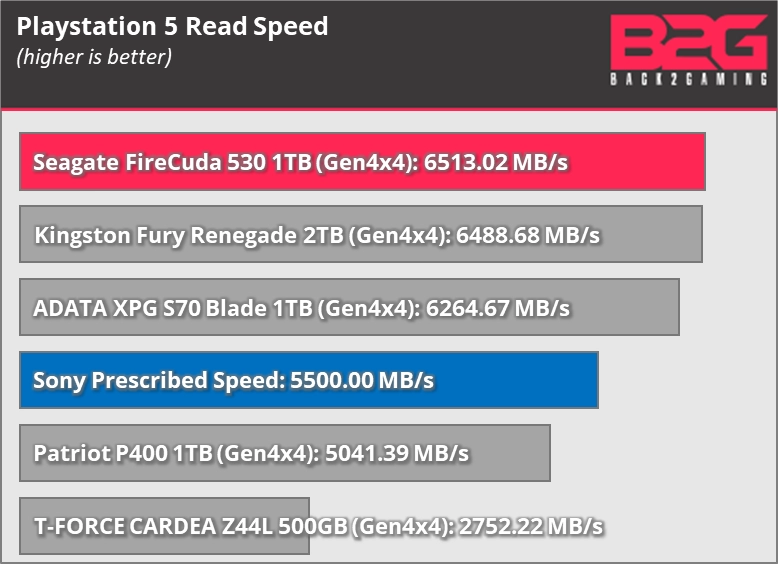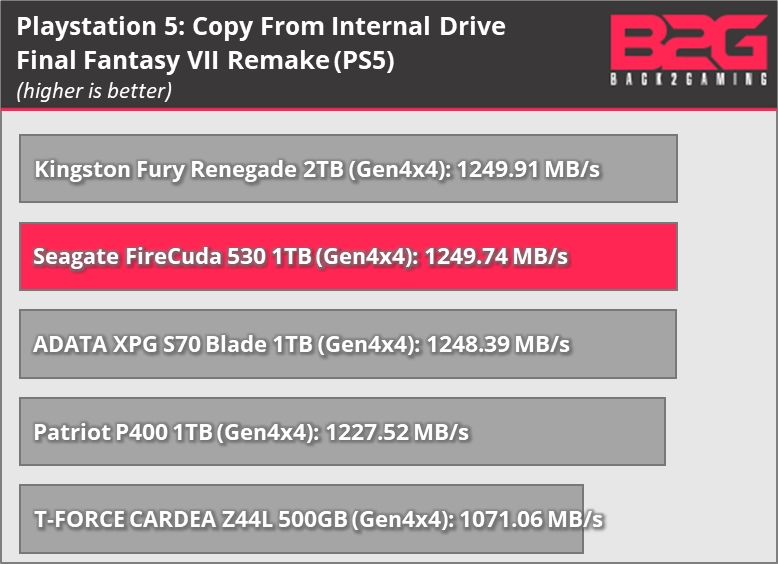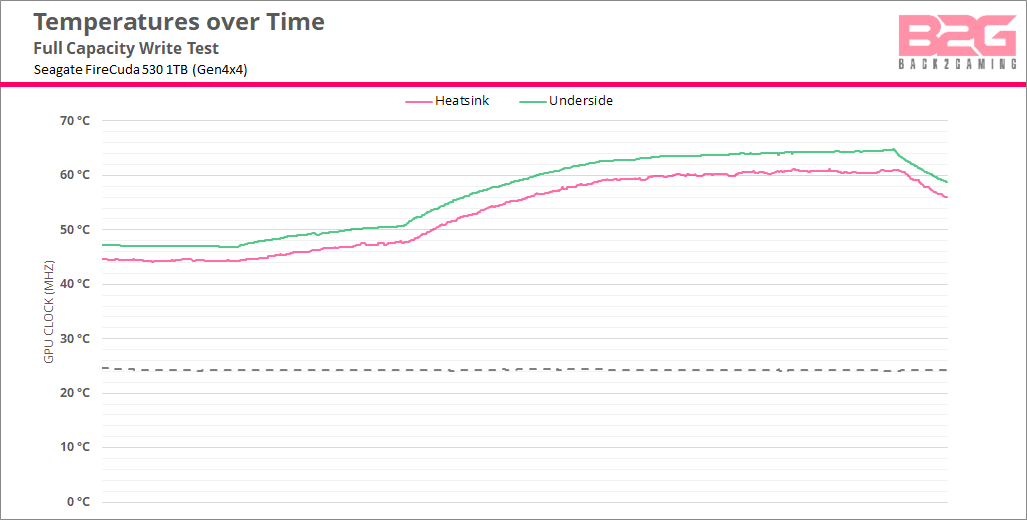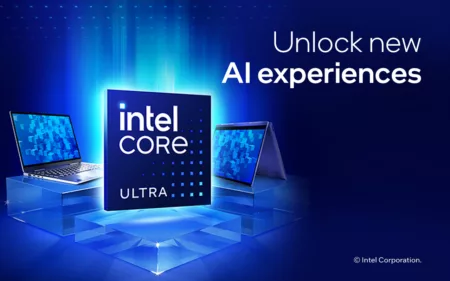Introduction
Its been a while since we’ve taken a look at a Seagate product and our last Seagate SSD review was the Seagate FireCuda 510 back in 2019 when the company was still spinning off their SSD efforts. Fast-forward to today and we now have the latest iteration of SSDs from Seagate: the FireCuda 530 and the company has really caught up quickly with the rest of the market.
The Seagate FireCuda 530 debuted along the same time as Sony announced their firmware support for M.2 storage expansion. This announcement came with Seagate announcing their FireCuda 530 heatsink option which confirms tightly with Sony’s size dimensions but also goes the extra mile by working with industry cooling veteran EKWB to add some hefty cooling to their 2nd-gen PCIe Gen4 drives. Seagate sells non-heatsink models as well for motherboards that have an integrated shroud and M.2 heatspreaders.
That said, the interface isn’t just the only new thing we have here as Seagate moves to 176-L TLC NAND. Coupled with the Phison E18 controller, its template PCIe Gen4 7000MB/s specs and Seagate ensures that for non-performance seekers, quality is backed by the Seagate name.
In this review we’ll take a look at the 1TB option of the Seagate FireCuda 530 Heatsink model and this review introduces our Playstation 5 and storage tests for gaming by UL. Read on to find out more!
Features & Specification
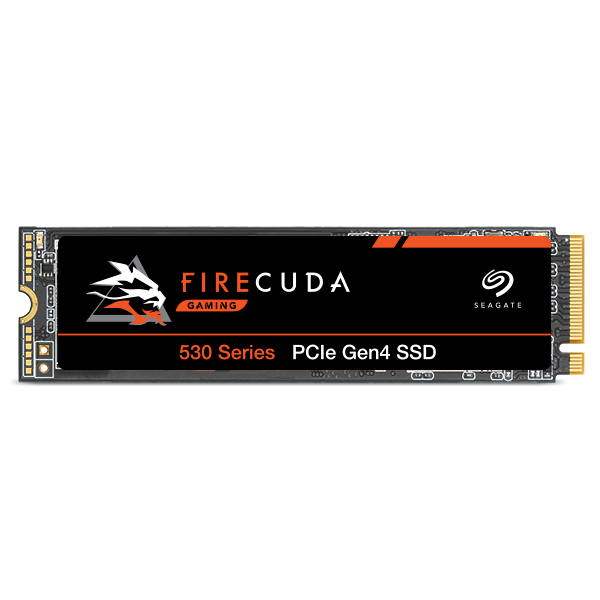 |
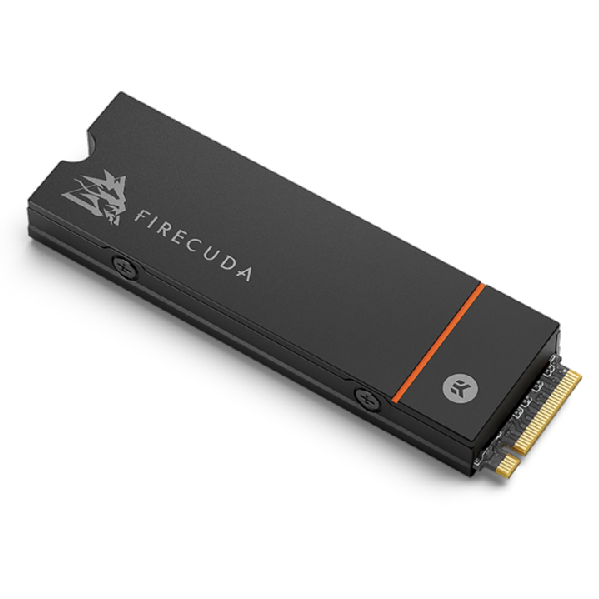 |
|
| FireCuda 530 | FireCuda 530 Heatsink | |
| Form Factor | M.2 2280 | |
| Interface | PCIe 4.0 NVMe x4 | |
| Size/Capacity | 500GB, 1TB, 2TB, 4TB | |
| Controller | Phison E18 | |
| NAND Type | 3D TLC | |
| Sequential R/W | 500GB – 7000/3000 1TB – 7300/6000 2TB – 7300/6900 4TB – 7250/6900 |
|
| Random 4K R/W | 500GB – 400,000/700,000 1TB – 800,000/1,000,000 2TB – 1,000,000/1,000,000 4TB – 1,000,000/1,000,000 |
|
| Total Bytes Written (TB) | 500GB – 640 1TB – 1275 2TB – 2550 4TB – 5100 |
|
| MTBF | 1.8 million hours | |
| Warranty | 5 years | |
- Speed reigns—Seagate’s FireCuda 530 dominates the SSD lineup, delivering pure performance, absolute power, the most advanced components, and unrivaled endurance
- Exhilarating performance up to 7300MB/s—harness the full power of PCIe Gen4 speeds to dominate next-generation games and apps
- Our fastest FireCuda SSD ever built for the ultimate in sustained, pro-level gaming and accelerated content creation—with transfer speeds up to 2x faster than PCIe Gen3 M.2 NVMe SSDs and 12x faster than SATA SSDs
- Includes custom built low-profile heatsink designed by EKWB and Seagate to help minimize thermal throttling and maintain peak performance for longer time periods of time
- Enjoy long-term peace of mind with the included five-year limited warranty and three years of Rescue Data Recovery Services
- The FireCuda 530 with heatsink is compatible with PS5 consoles. Easy drop-in expansion—no additional parts needed
Closer Look – Seagate FireCuda 530 M.2 SSD
Seagate’s premium touch for their products begin with the packaging. Seagate ships their SSDs in full-colored box with a 3D mascot of their product line. For the FireCuda, we have a 3D dragon adorning the front with the orange series colors. A small hero image of the actual product is on the package to indicate the actual model.
Inside the package we the actual SSD and a bunch of paper works e.g. quick star manual and a sticker sheet. Seagate also includes a Rescue data recovery voucher with this drive.
The Seagate FireCuda 530 is a standard M.2 SSD. While the non-heatsink version would only have a sticker adorning the it, the heatsink version will be pre-installed with an EKWB heatspreader engineered in collaboration with Seagate.
While standard heatsinks will usually have dissipation fins, the Seagate FireCuda 530 is a solid piece of metal. A special coating treatment also further helps the thermal performance of the drive but unlike other solutions, it relies little on active airflow.
Removing the heatsink is very hard and is not recommended. I removed to show you the chip layout which is the same as the non-heatsink version.
Standard M.2 heatsinks will range from 5grams all the way to 12grams from the ones we’ve tested from the likes of Corsair, Adata and Patriot. The EKWB heatsink on the Seagate FireCuda 530 is a hair under 32 grams. That is a significant increase in material density.
Most motherboards will have integrated heatsinks especially high-end ones. For maximum compatibility, the non-heatsink version is best used on these scenarios. For those that have more open slots, the heatsink version works well.
Seagate designed the FireCuda 530 Heatsink version with the Playstation 5 in mind. Sony has indicated a very tight guideline for clearance, seeing the FireCuda 530 fit like a glove shows how much EKWB maximizes the dimensions for the best possible results.
Performance Testing – Seagate FireCuda 530 M.2 SSD
Test Setup
Processor: Intel Core i9-12900K
Motherboard: ROG Maximus Z690 EXTREME
Memory: Kingston FURY Beast DDR5-5200 16GBx2
Storage: Kingston FURY Renegade 2TB (OS), tested drive as listed
PSU: Seasonic Platinum 1050w
Cooling: Corsair H150i 360mm AIO
Monitor: ROG PG27UQ
VGA: ZOTAC GTX 1050 Ti
Our sample for this test is the Seagate FireCuda 530 Heatsink version
Potential Performance (ATTO Disk Benchmark)
ATTO Disk Benchmark benchmarks a drive’s read and write speeds with increasing file sizes and graphs them. The results shows us a good idea of how the drive performs on file sizes, showing us read and write speeds and how consistent they are. The higher the better of course and the the more consistent the numbers, the better. This also shows us if bottlenecks exist for either the controller or the device itself.
AIDA64 Disk Benchmark
AIDA64 features an internal storage benchmarking tool. It has a large suite of read and write tests that will measure both linear (sequential) and random disk performance in both transfer rate and access times. AIDA64’s write tests are destructive and will destroy all drive data. Linear write testing in AIDA64 is what I use as a stress for our thermal capture. The random read benchmark here shows us how consistent the read performance is in varying sizes and location on the disk the data is written.
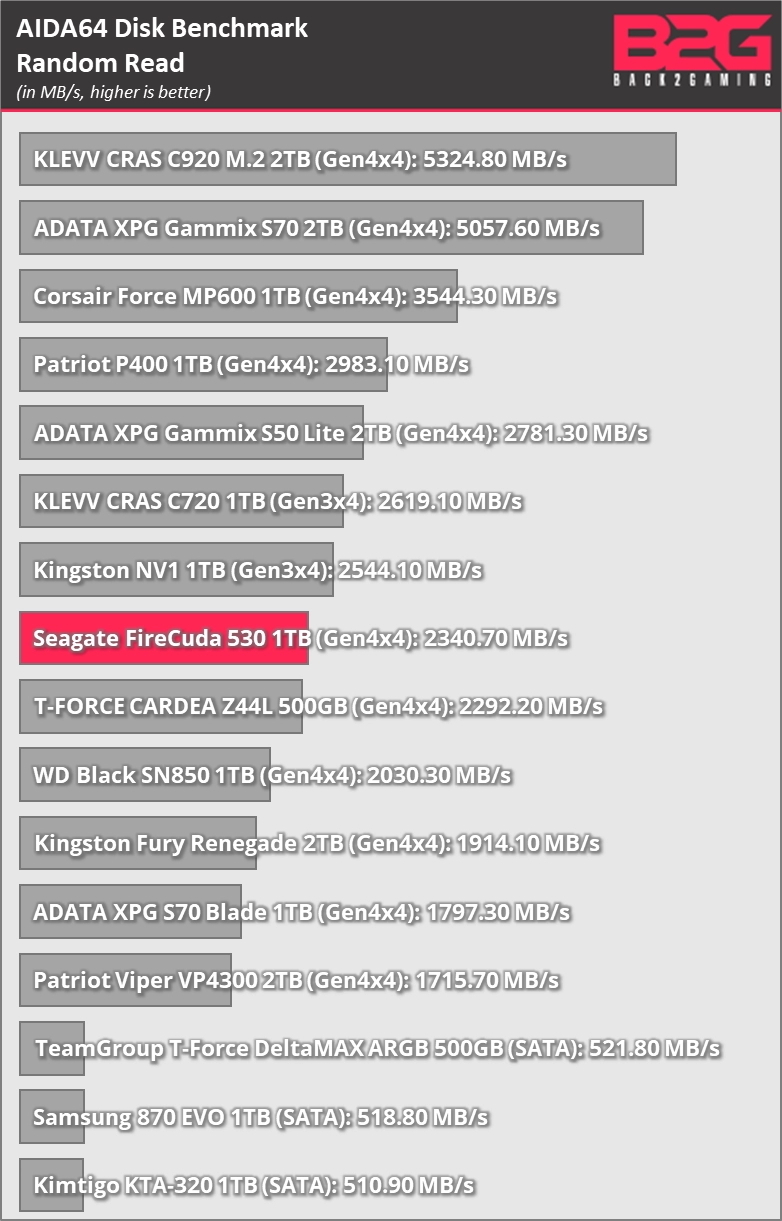
Linear Write
The Seagate FireCuda 530 1TB saturates its SLC cache around 390GB and tops out at 5.5GB/s. The speed drops to 800MB/s afterwards and recovers a bit near the end of the write load.
Anvil’s Storage Utilities
This benchmark features a dedicated SSD benchmark which measures disk transfer rate as well as IO speed. The benchmark serves to compliment the other sequential tests in this review to show consistency.
AS SSD
Another SSD benchmark oriented towards sequential and 4K transfer performance. This benchmark also features a compression and file copy benchmark for more specific testing.
CrystalDiskMark
CrystalDIskMark has been the most actively updated disk benchmark amongst all the ones we use and is effectively the most reliable. Unfortunately, version to version results are not comparable which limits the ability to extrapolate comparative data. Still its a reliable and direct benchmark. Like the previous, it allows control over test data pattern, the test data size, amount of passes and individual benchmark control.
3DMark Storage Benchmark
The 3DMark Storage Benchmark uses traces recorded from popular games and gaming-related activities to measure real-world gaming performance, such as:
- Loading Battlefield V from launch to the main menu.
- Loading Call of Duty: Black Ops 4 from launch to the main menu.
- Loading Overwatch® from launch to the main menu.
- Recording a 1080p gameplay video at 60 FPS with OBS (Open Broadcaster Software) while playing Overwatch.
- Installing The Outer Worlds from the Epic Games Launcher.
- Saving game progress in The Outer Worlds.
- Copying the Steam folder for Counter-Strike: Global Offensive from an external SSD to the system drive.
Final Fantasy XIV Benchmark
Final Fantasy XIV has a standalone benchmark application for PC, always updated to the latest game expansion with the latest Endwalker benchmark delivering some very nice graphical updates. A long-standing feature of the Final Fantasy XIV standalone benchmark is the loading data is captures which is a summary of all the load times between scenes in the benchmark.
Playstation 5 Testing
The Sony Playstation 5 supports storage expansion thru M.2 devices and many SSD makers are advertising their drives as supporting the Playstation 5. That said, we’ve included PS5 bandwidth testing in our reviews. We use the Playstation 5’s internal read speed test for the primary initialization. Due to how Sony designed this benchmark, our testing averages at least 5 reads with the drive formatted after a rest period for best thermal results.
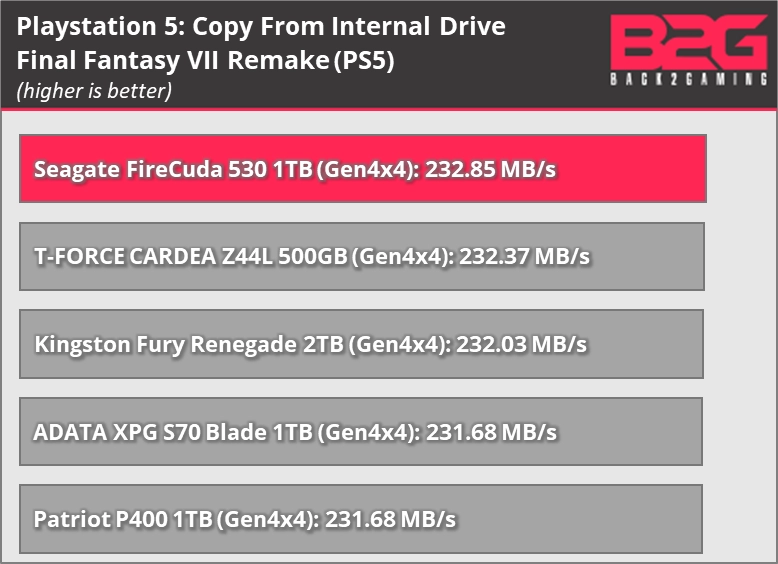
User Experience & Conclusion
Seagate is very adamant in positioning the FireCuda 530 as a top-end solution for gamers but particularly focuses on Playstation 5 and performance backs this up. Talking about the heatsink version specifically, Seagate’s cooling choice is a very good one. Cooling on SSD is not just about prolonging product life but to avoid performance drops. Most SSDs will either throttle performance or totally shutoff when temperatures go past their thermal limits.
In the case of the Seagate FireCuda 530, the heatsinks helps it stay below 70*C. Most of the drives we’ve tested hovers around 78*C on full load with a graphene heatspreader. The FireCuda 530 tops out at 65*C on a fully passive setup. This is beneficial for set-it-and-forget-it usage like on the Playstation 5 where active cooling is not a particular strongpoint of the device. Seagate curbs this limitation with pure mass.
Overall performance backs this up and the Seagate FireCuda 530 is easily one of the fastest M.2 SSDs we’ve tested. This does come at a cost: the 1TB models for the Seagate FireCuda Heatsink models go for Php13,500 while the non-heatsink model is around Php12,500. In comparison, Samsung’s 1TB second-gen Gen4 SSDs go for less than Php10,000 with Taiwanese brands like Kingston going for roughly the same.
Seagate even things out with extra value with their recovery bundle as well as their more extensive after-sales support. Seagate’s warranty is far better than the majority of many competitors and this sets them apart far from the rest of the market. As with everything related to data, backup is very important so please keep a backup of very important files as no warranty will save you from potential data loss.
The Seagate FireCuda 530 is a very well-made SSD and as most products will be measured by their performance, Seagate goes out of their way to really make quality a little more stand-out with the heatsink version.
Seagate backs the FireCuda 530 with a 5-year warranty. I give out B2G Gold Award for performance.



